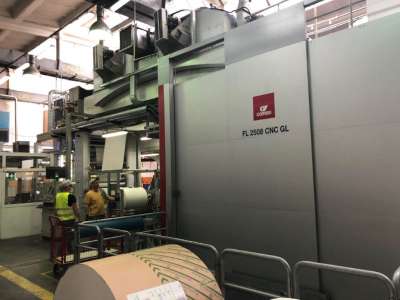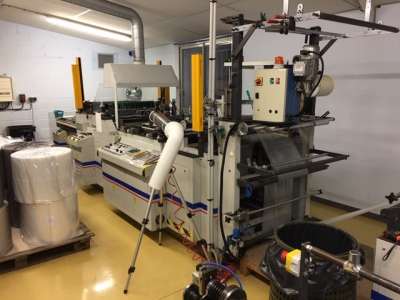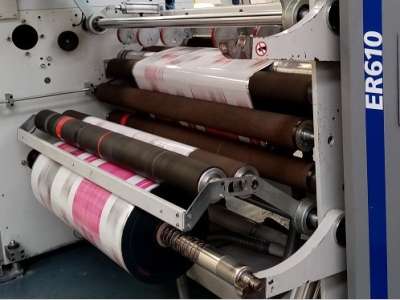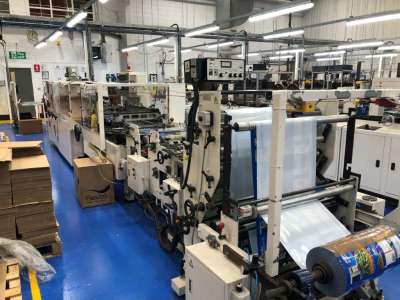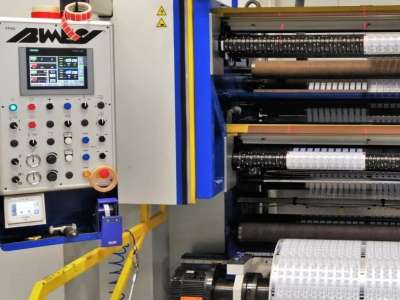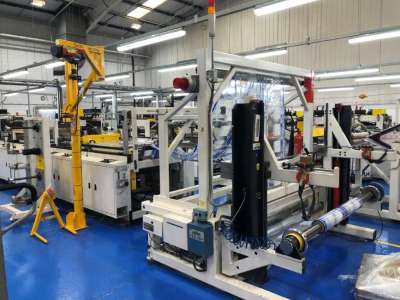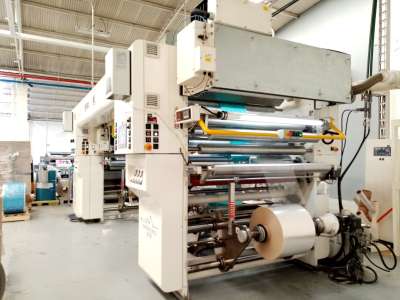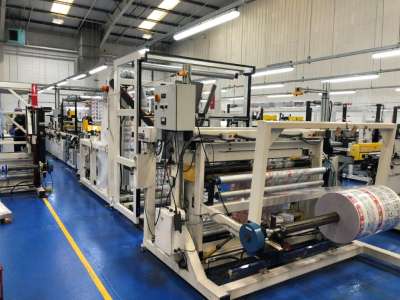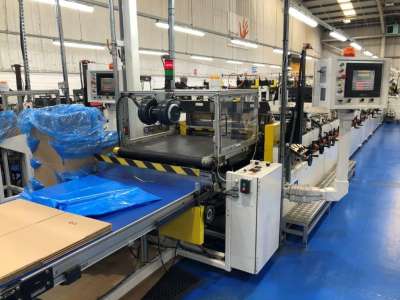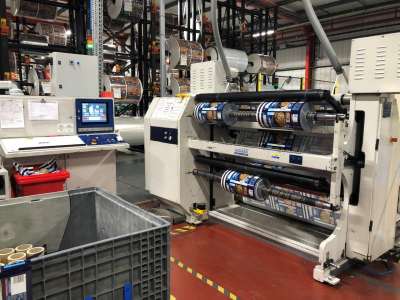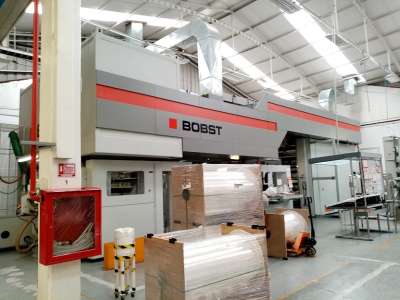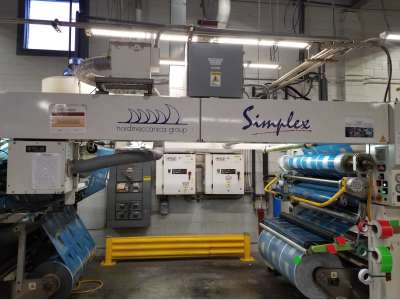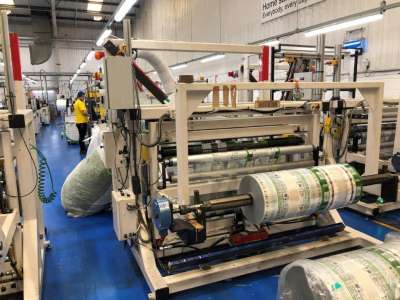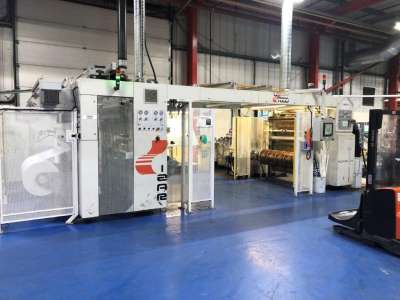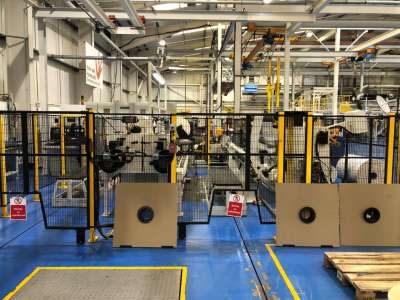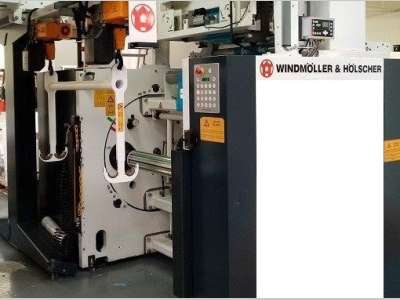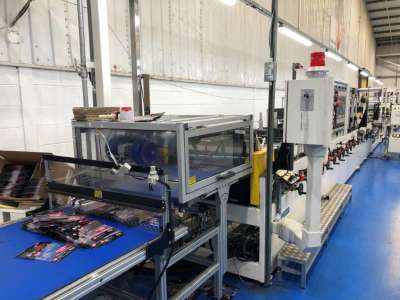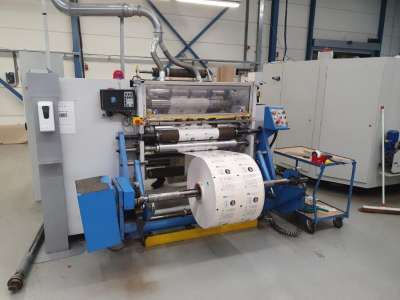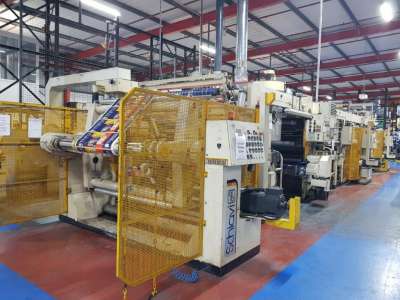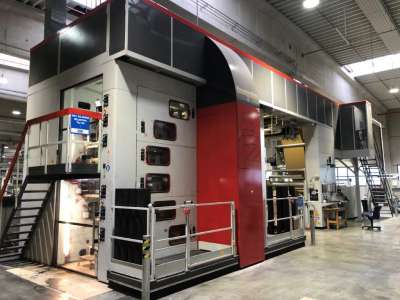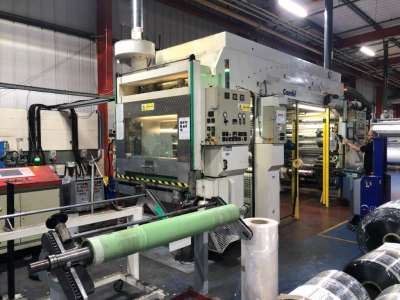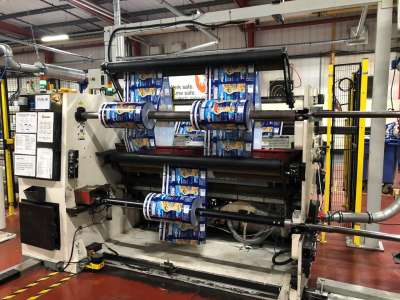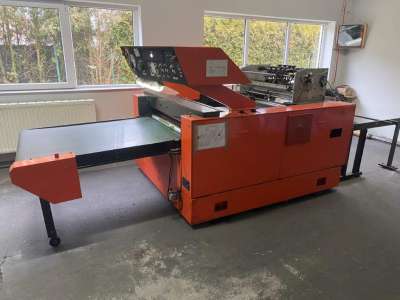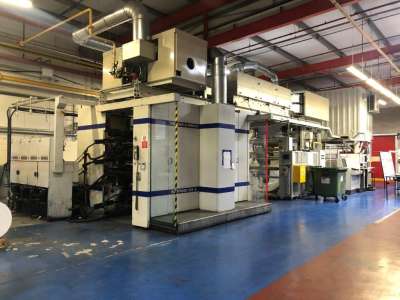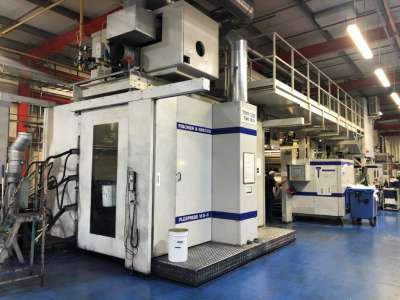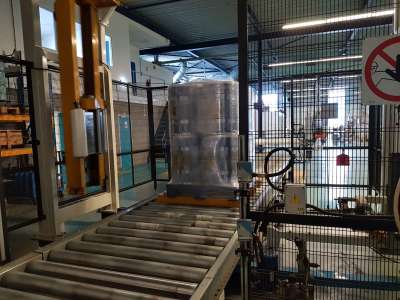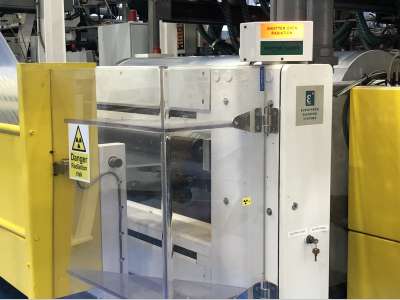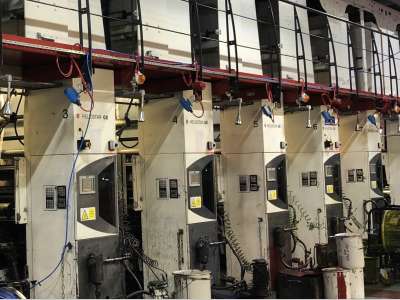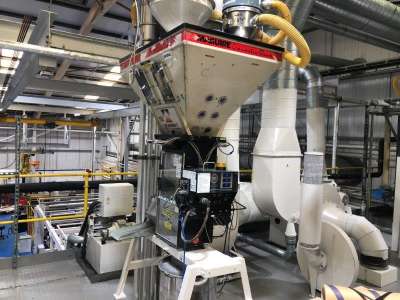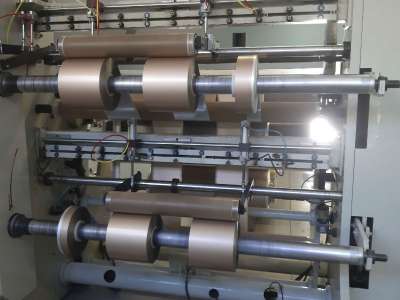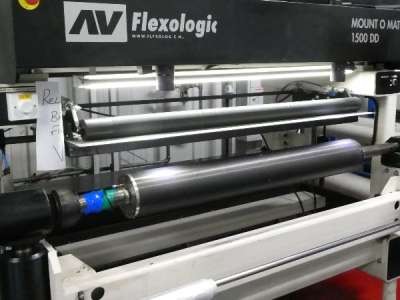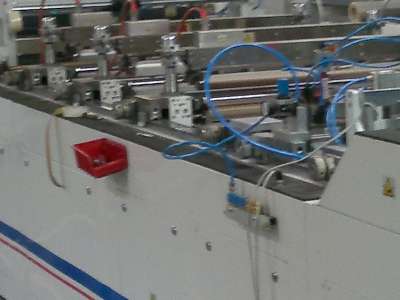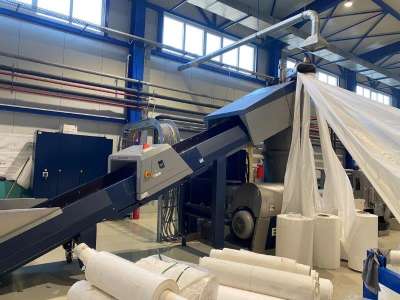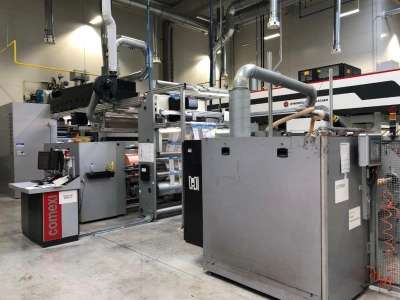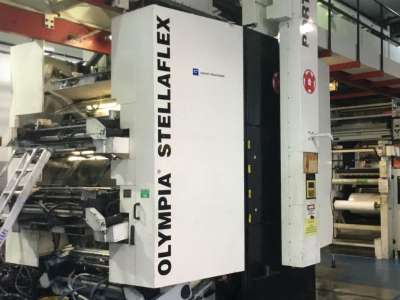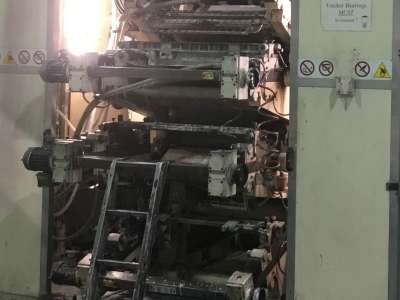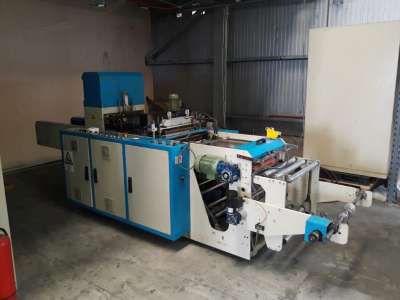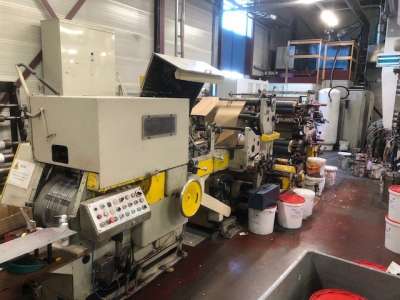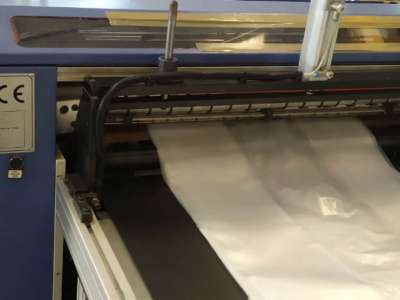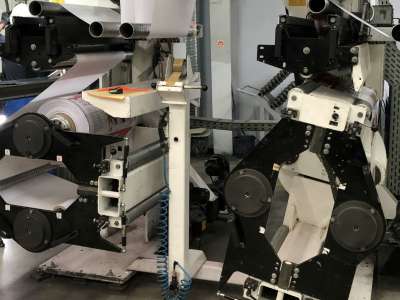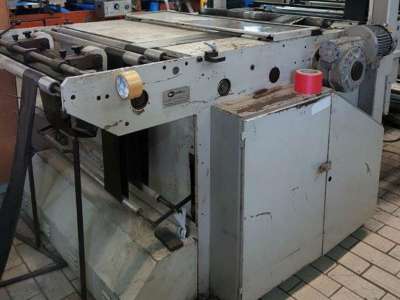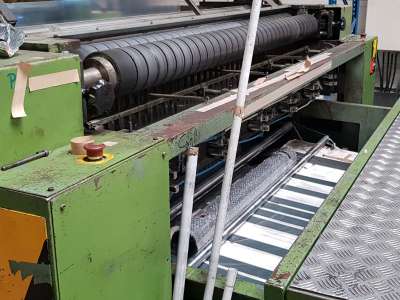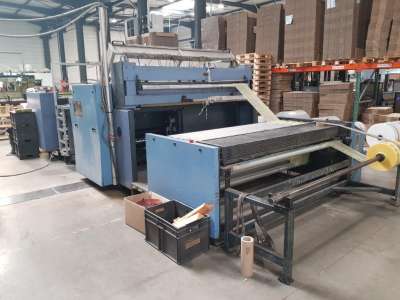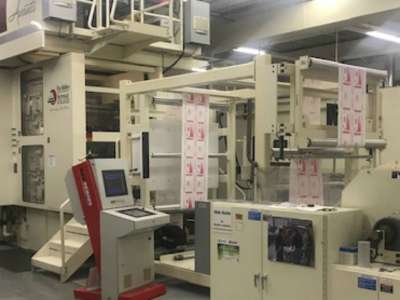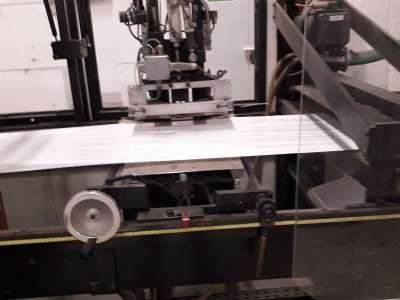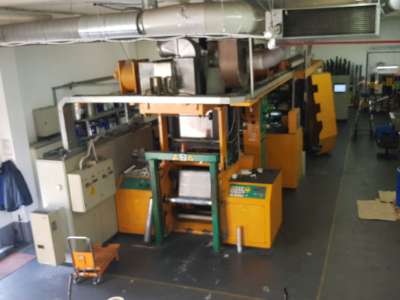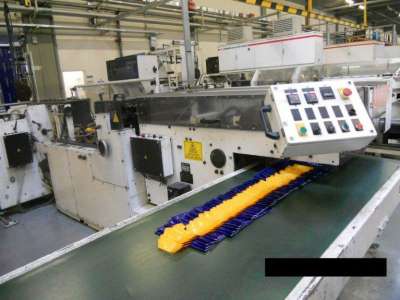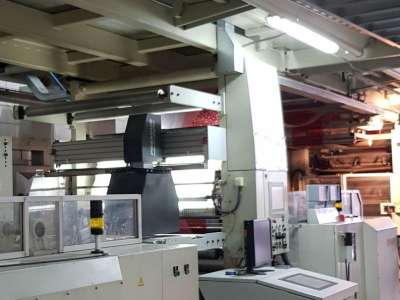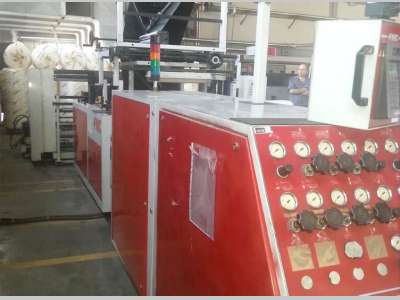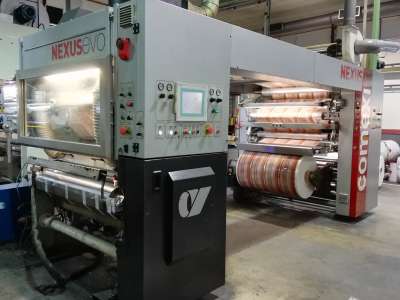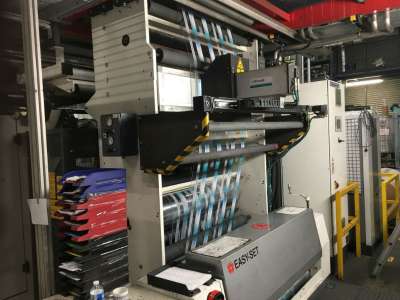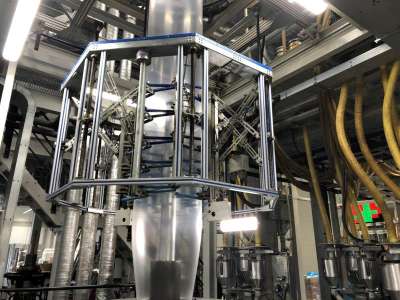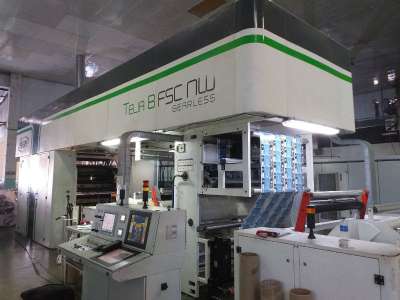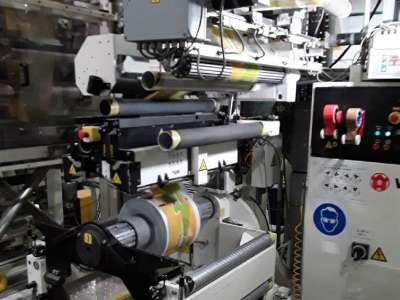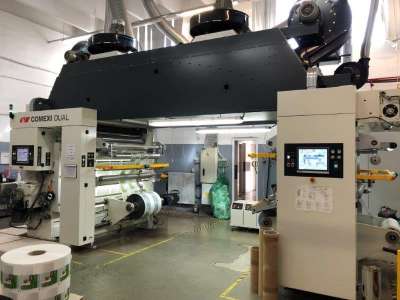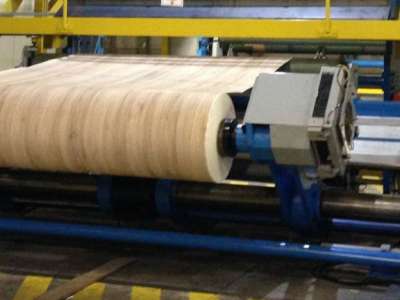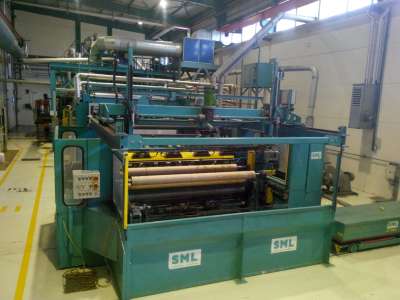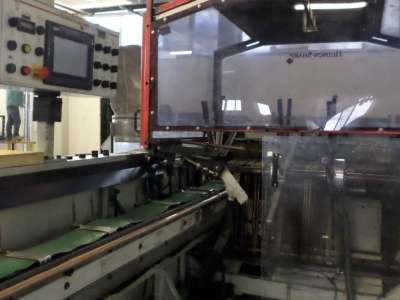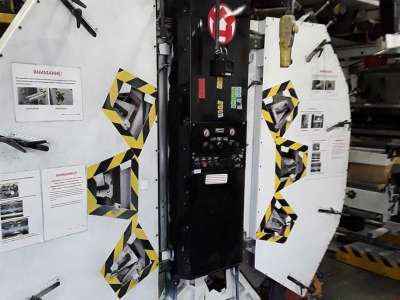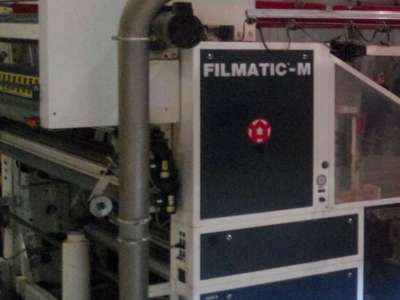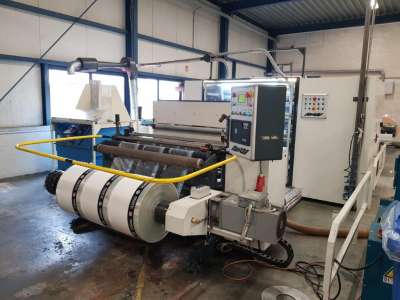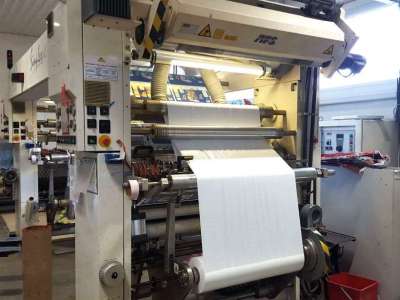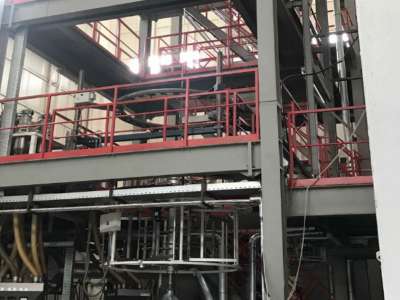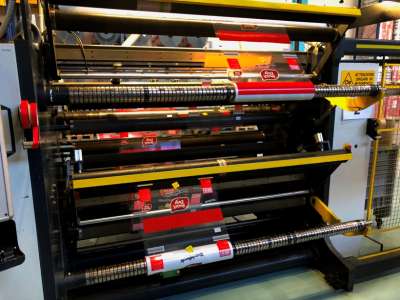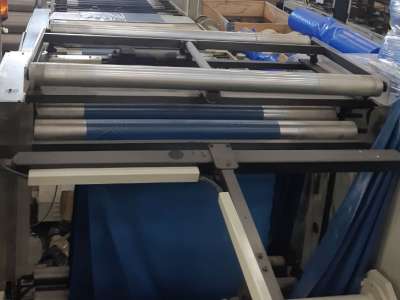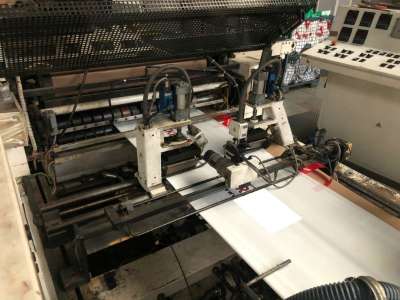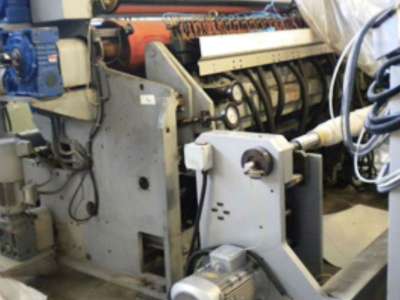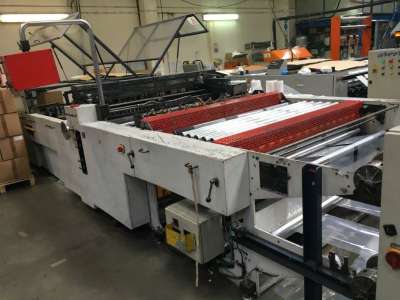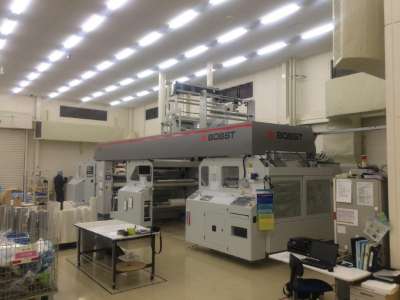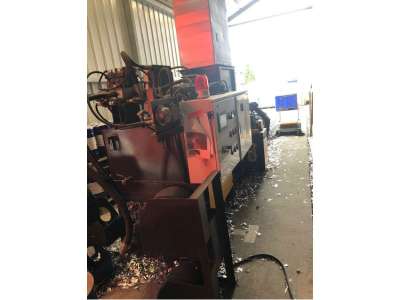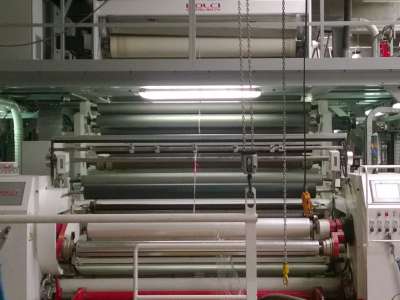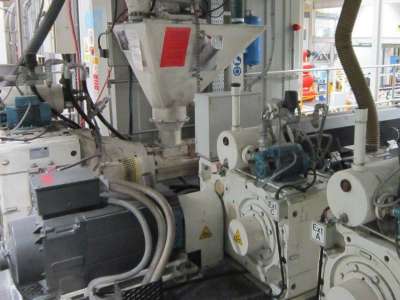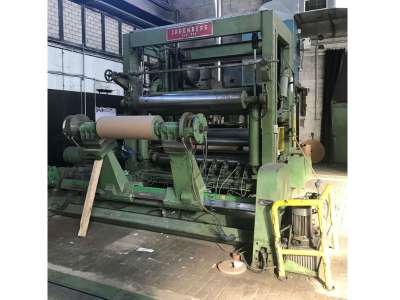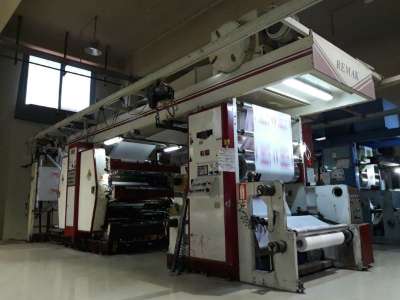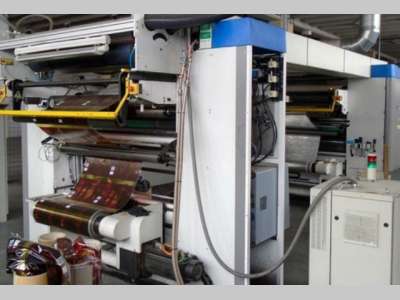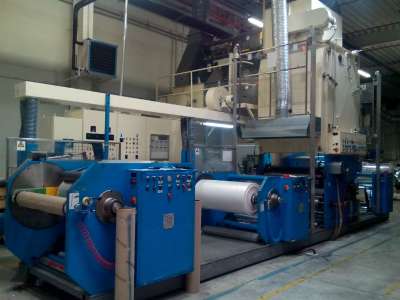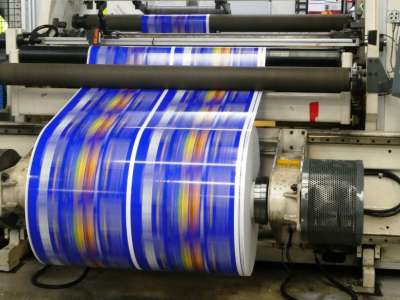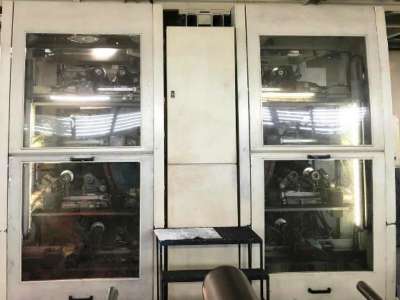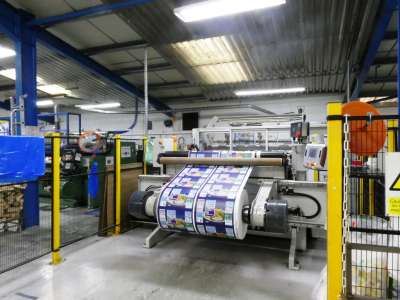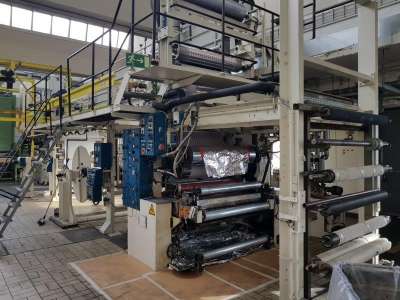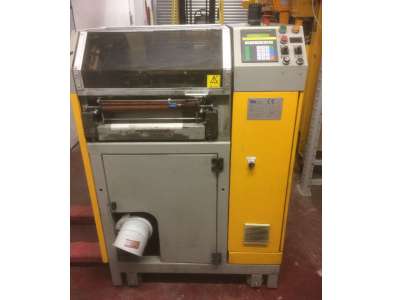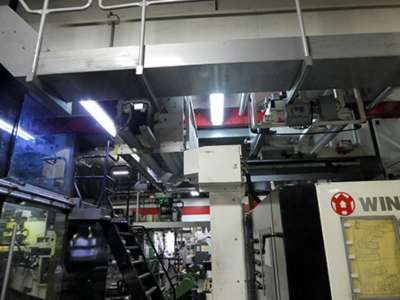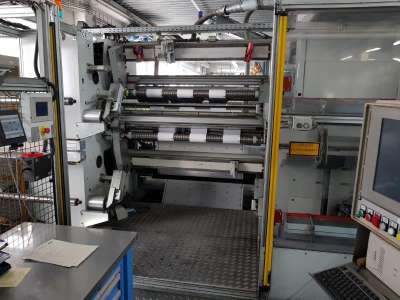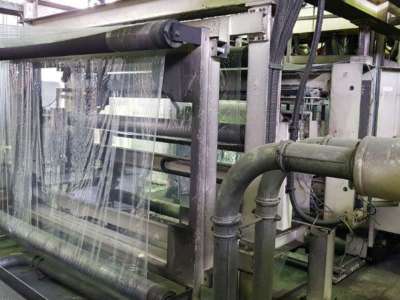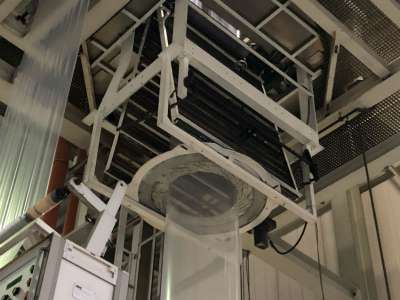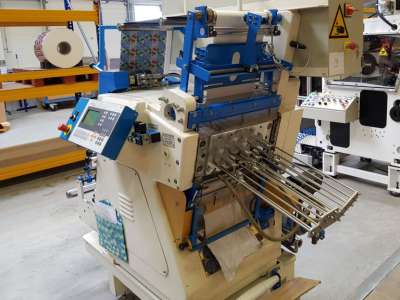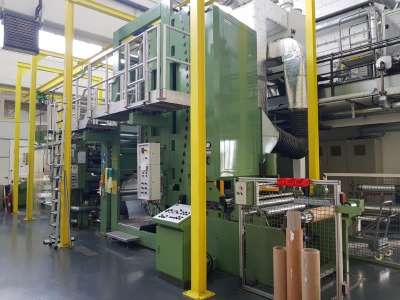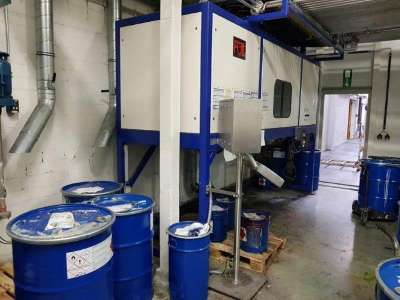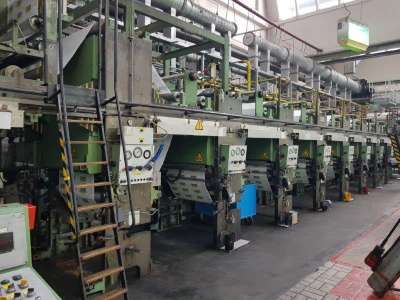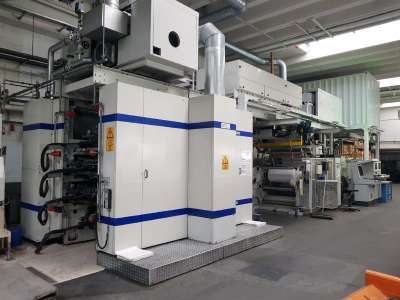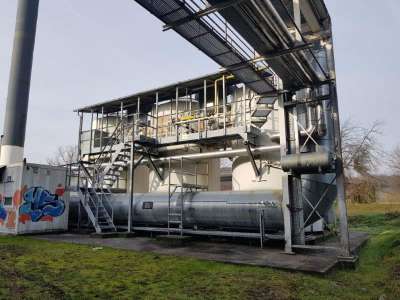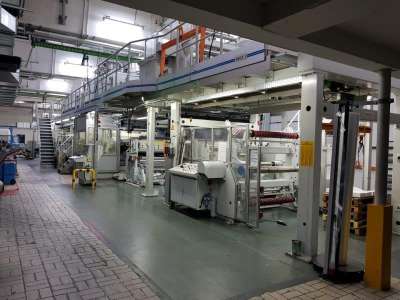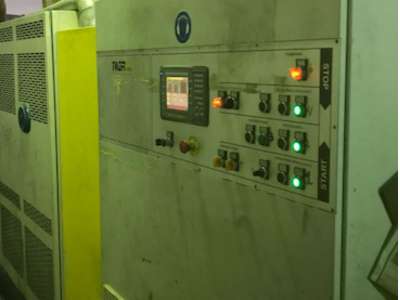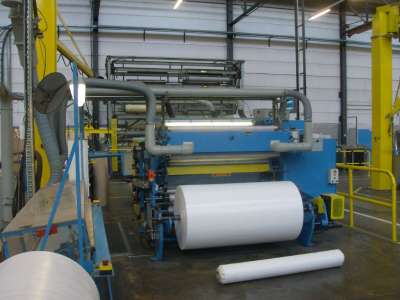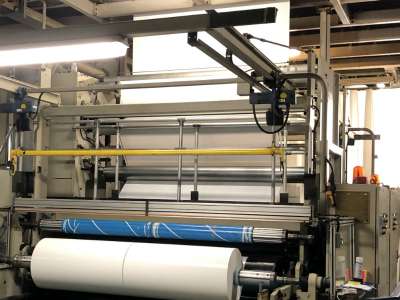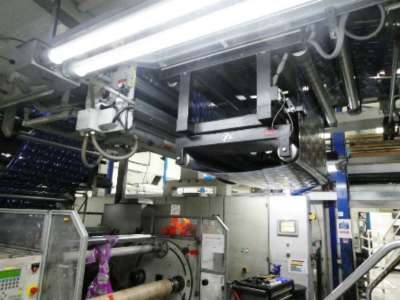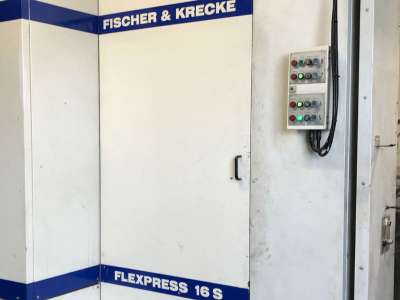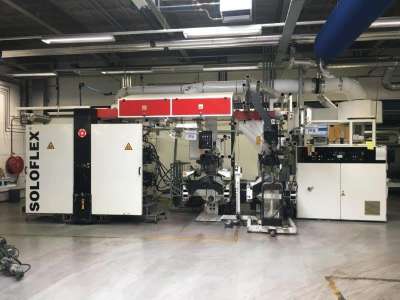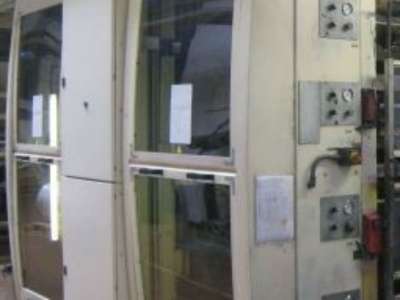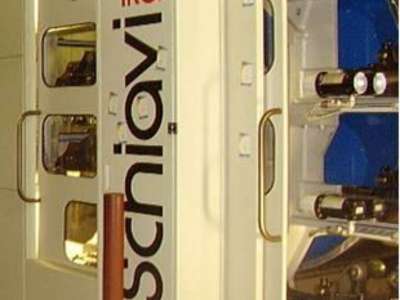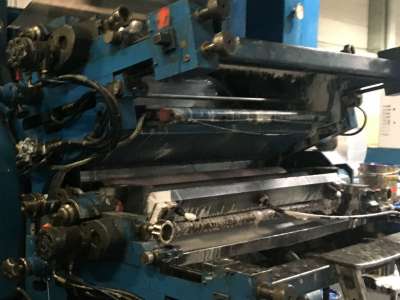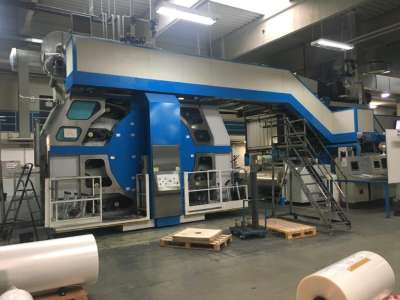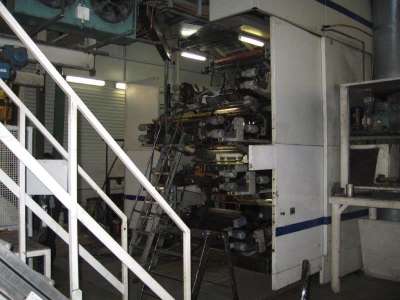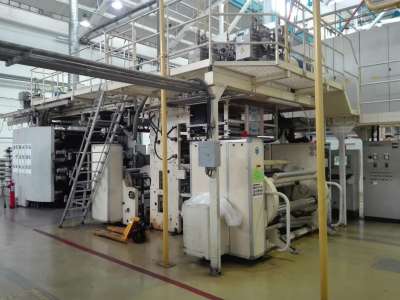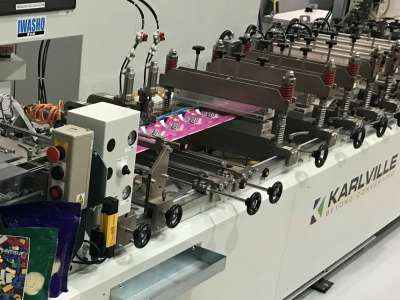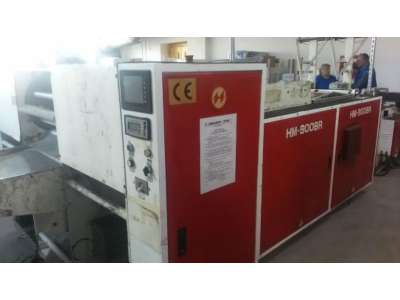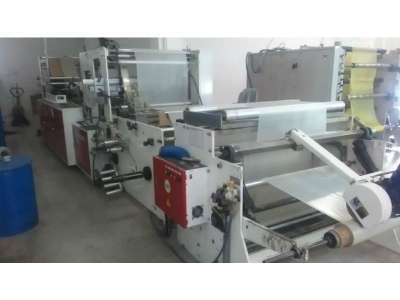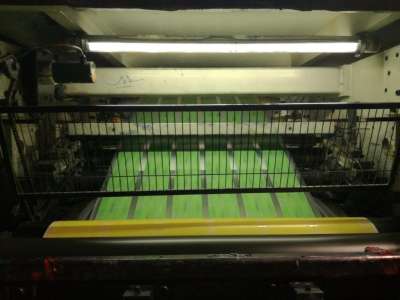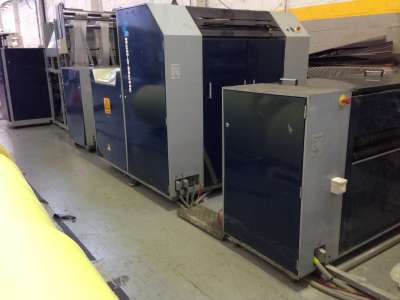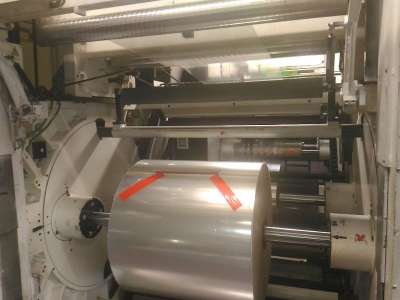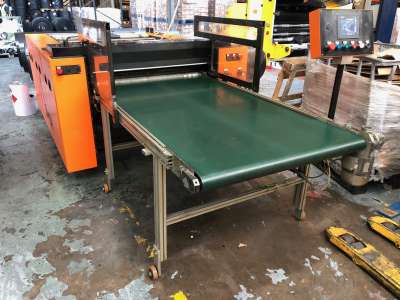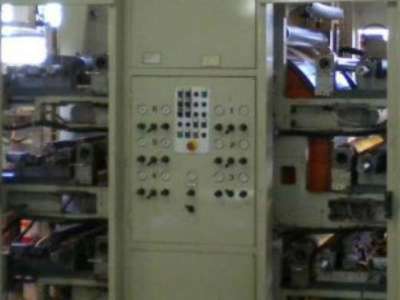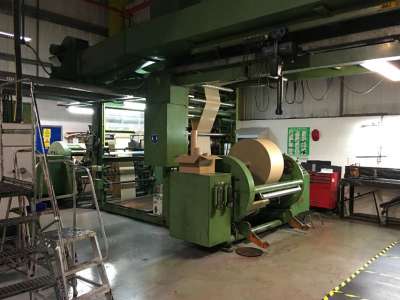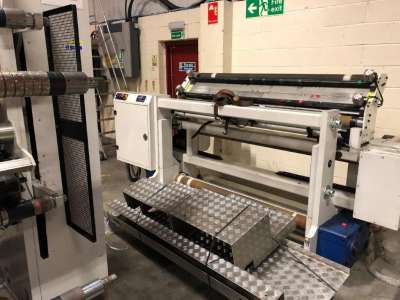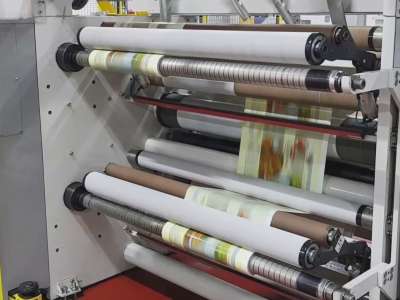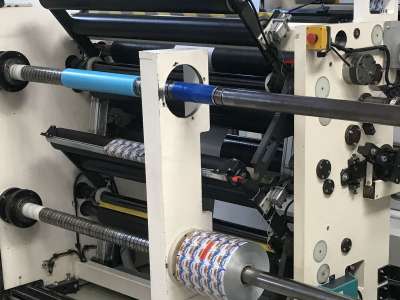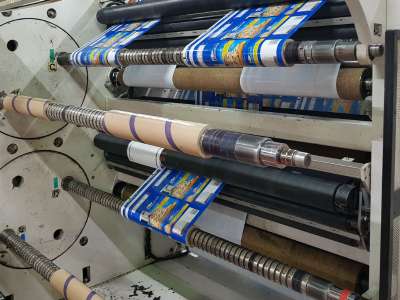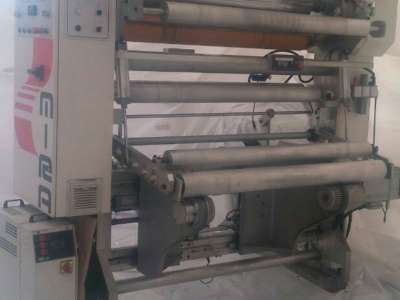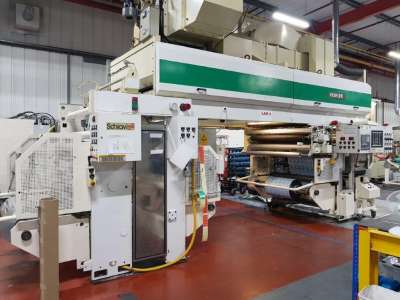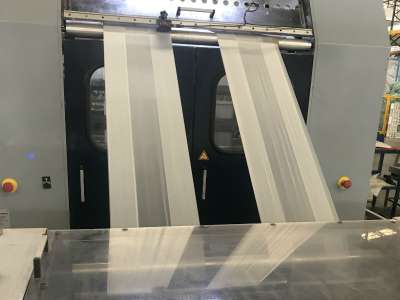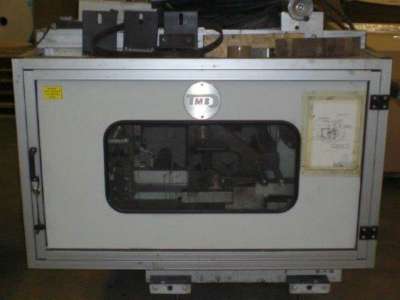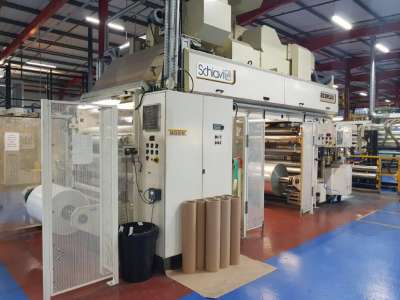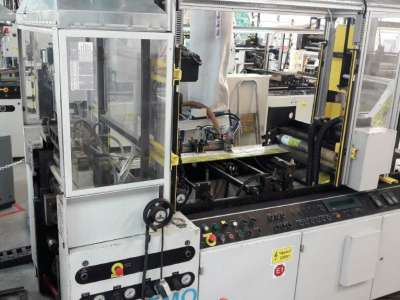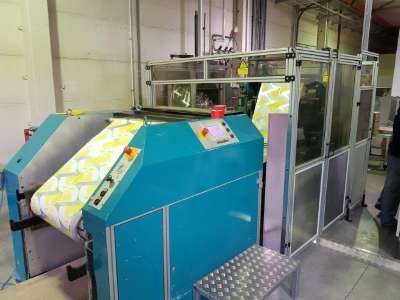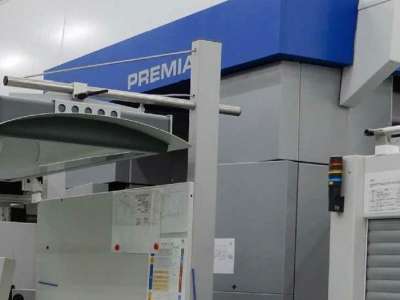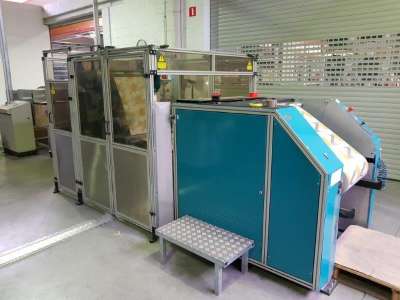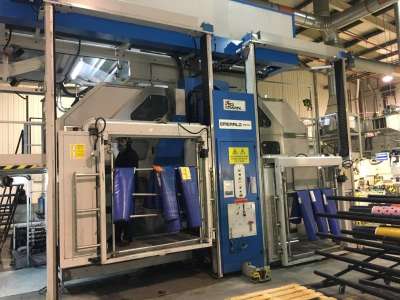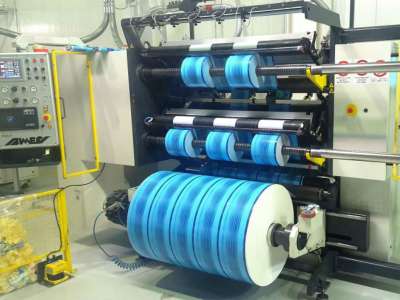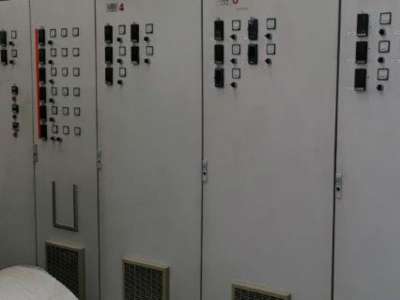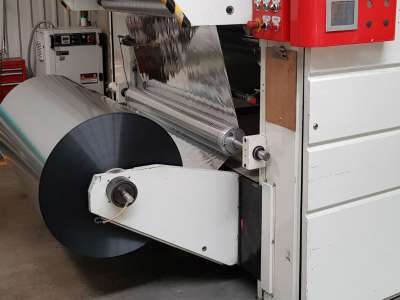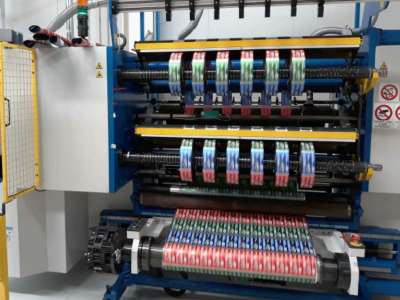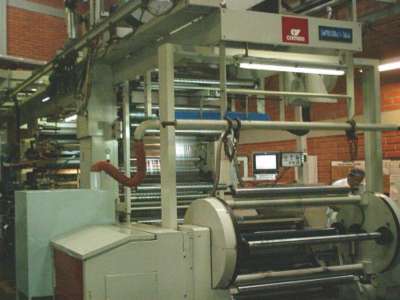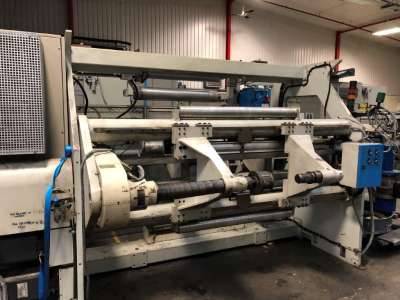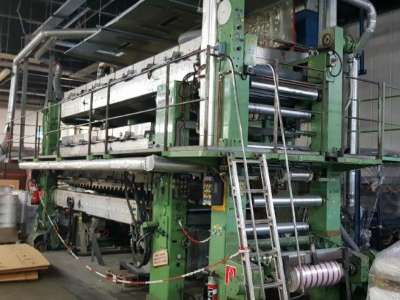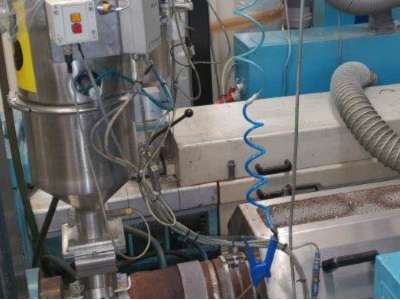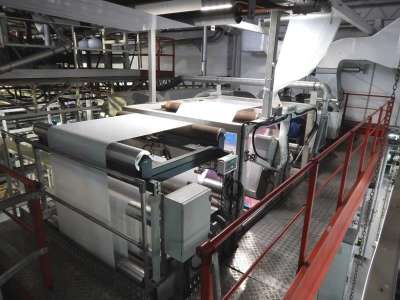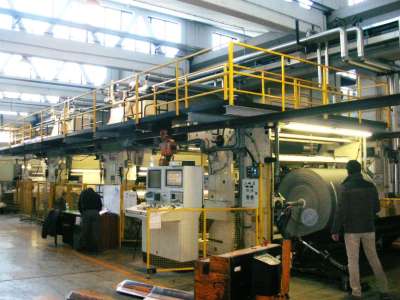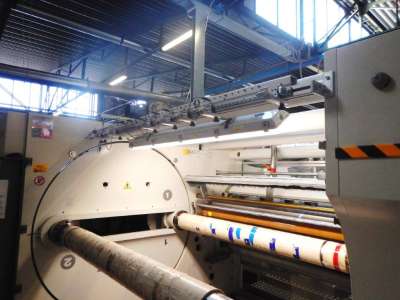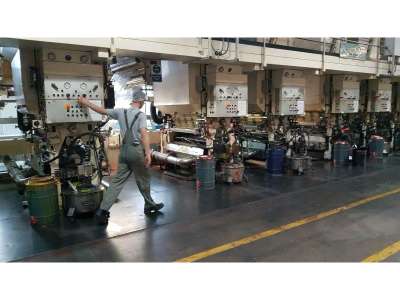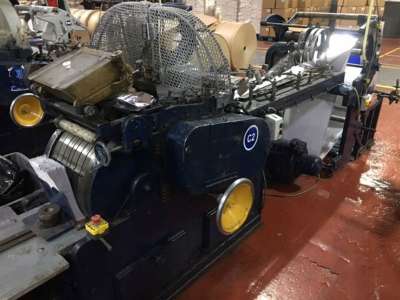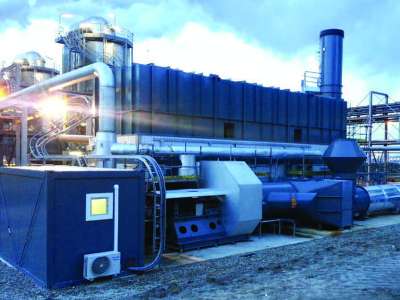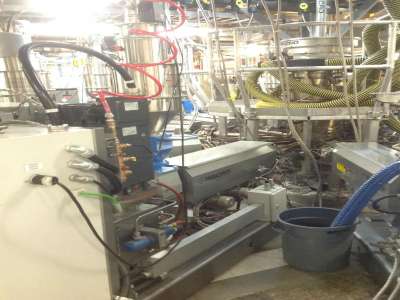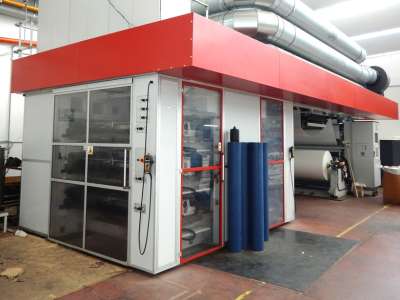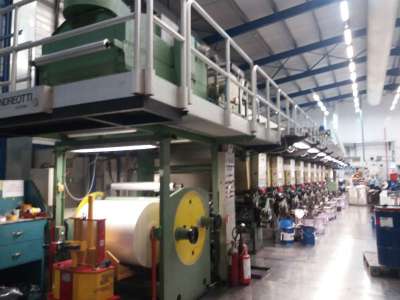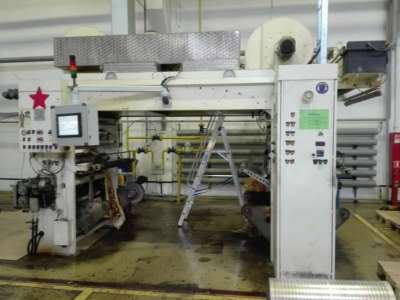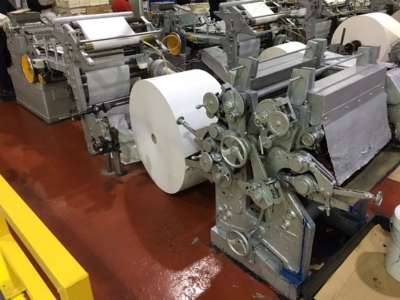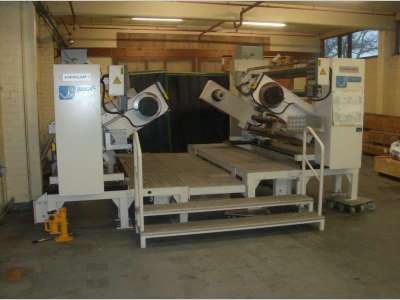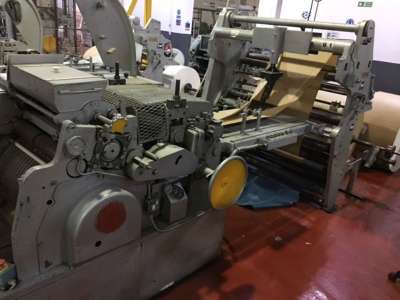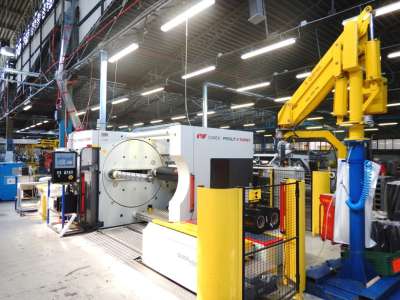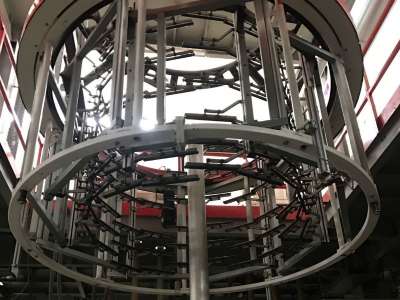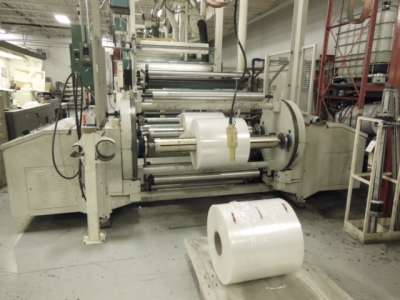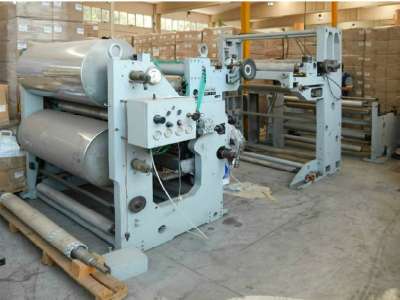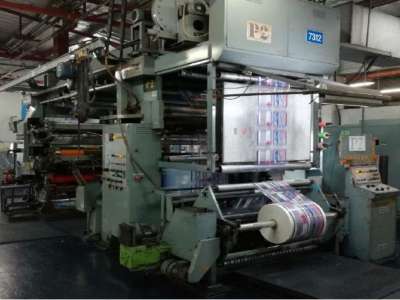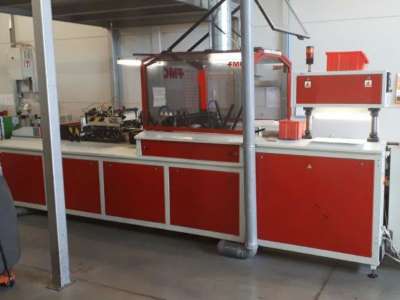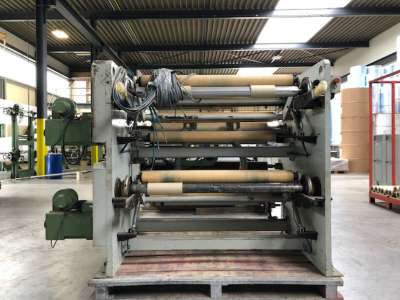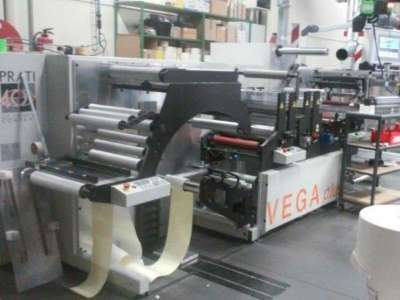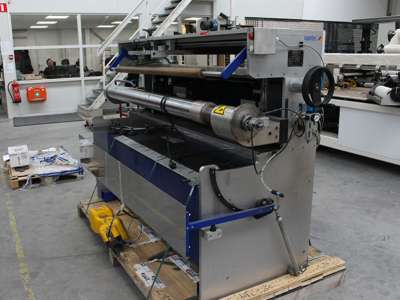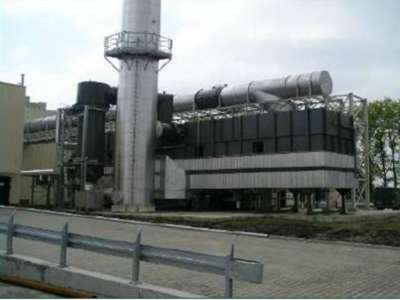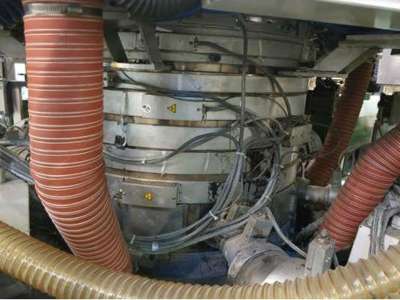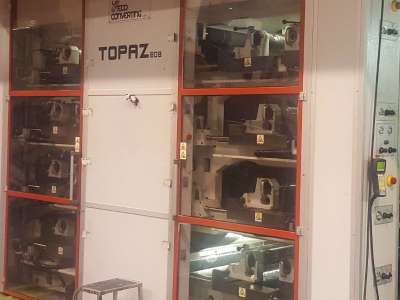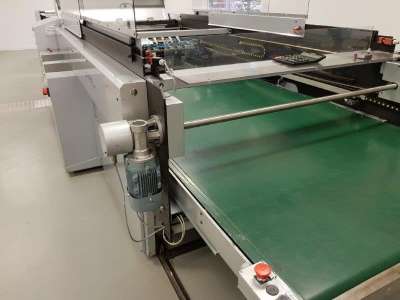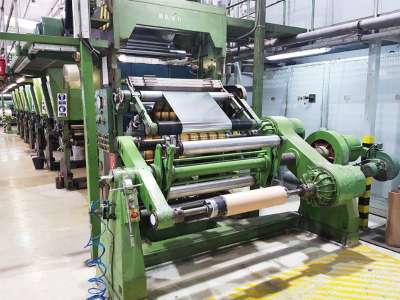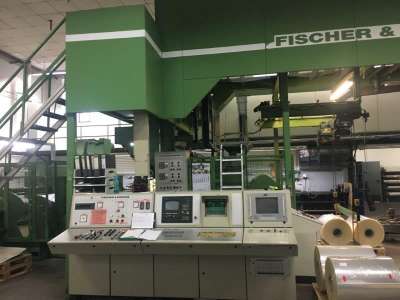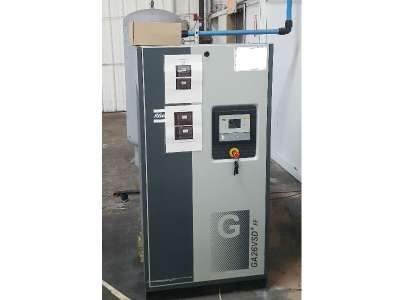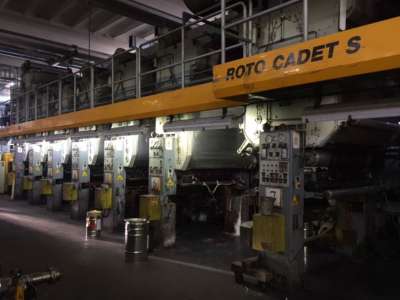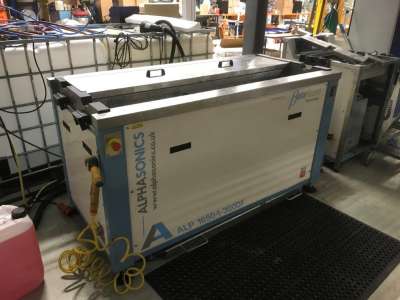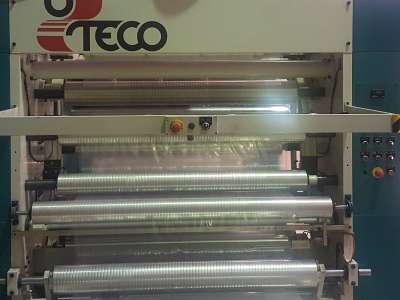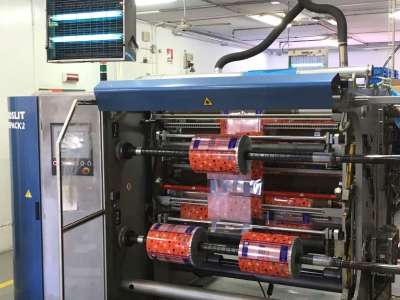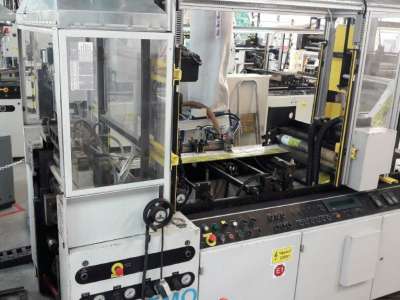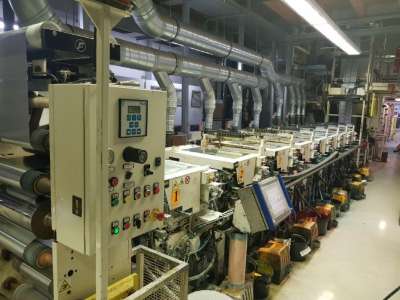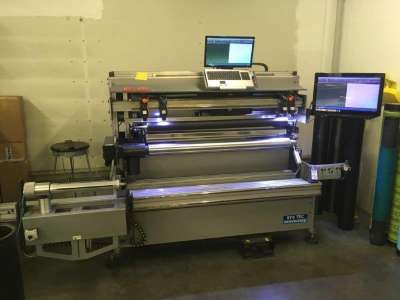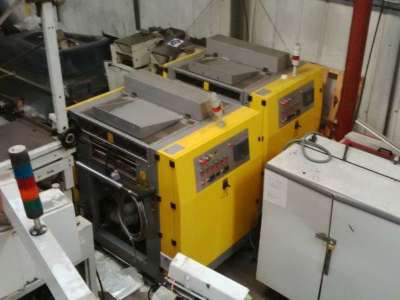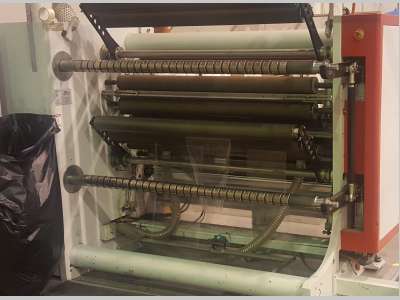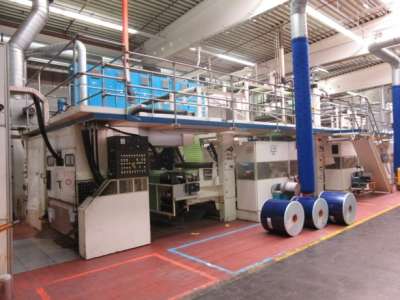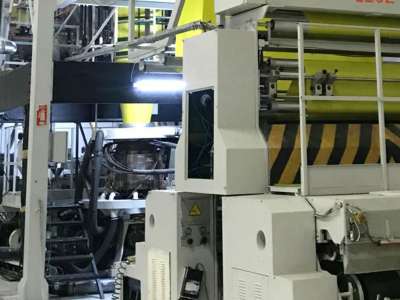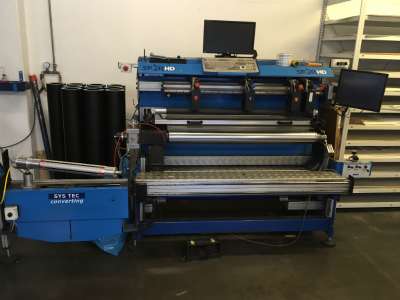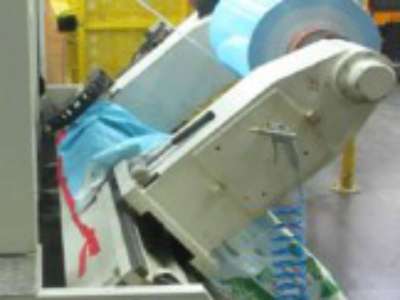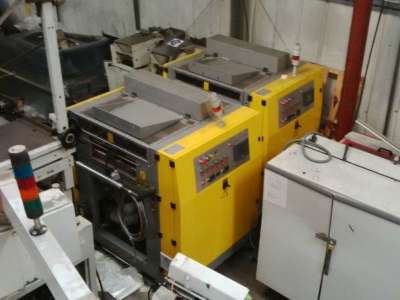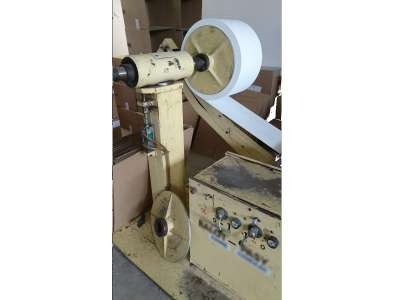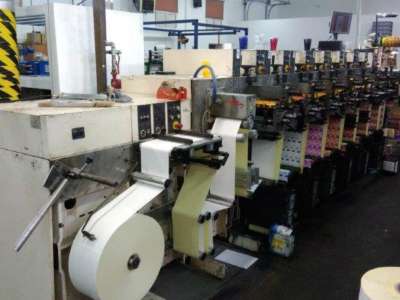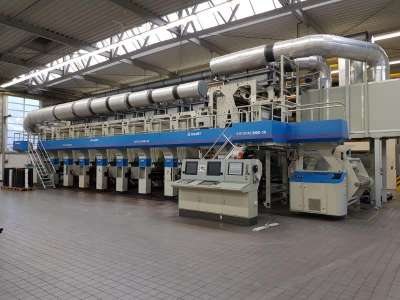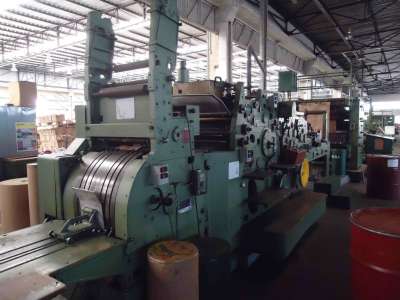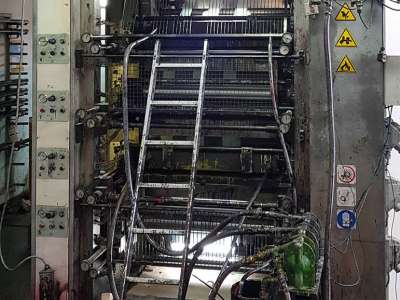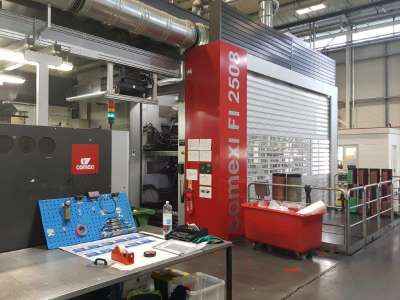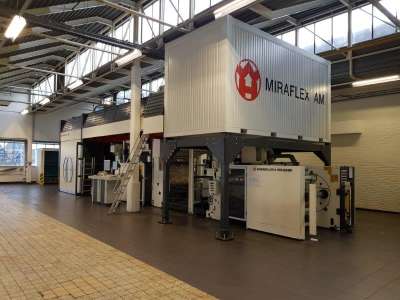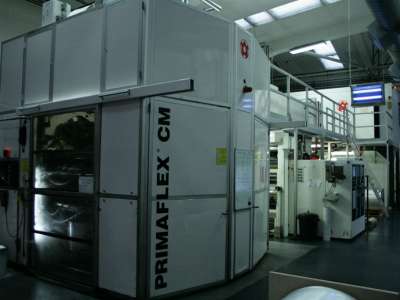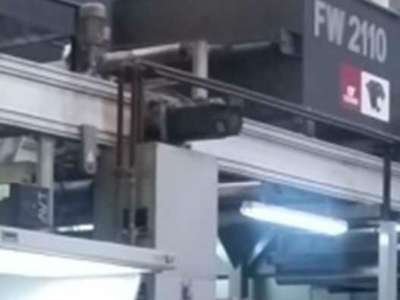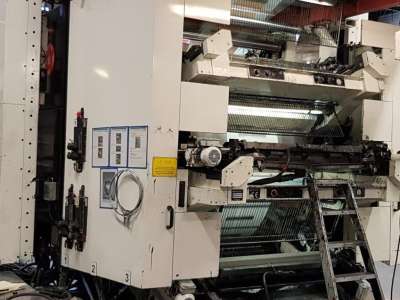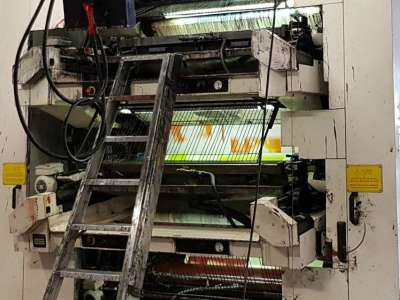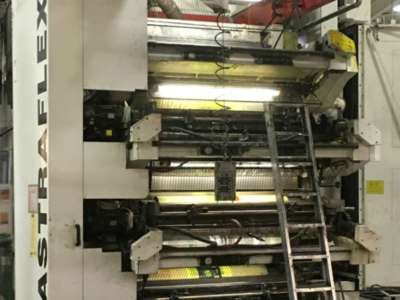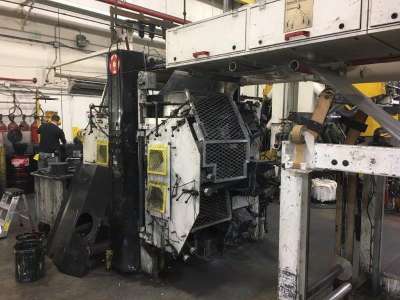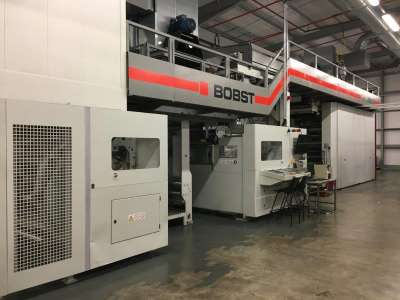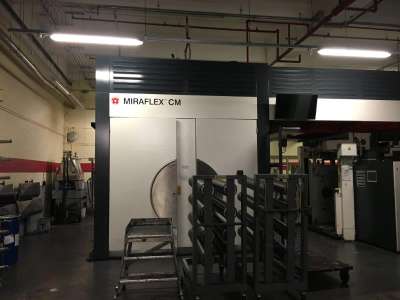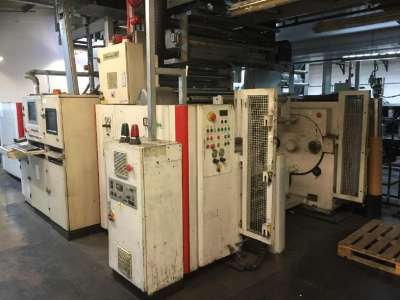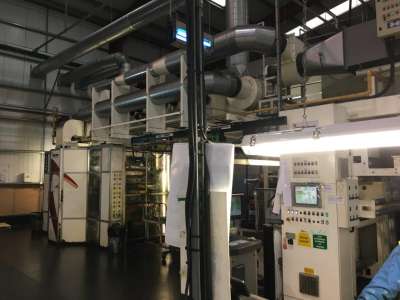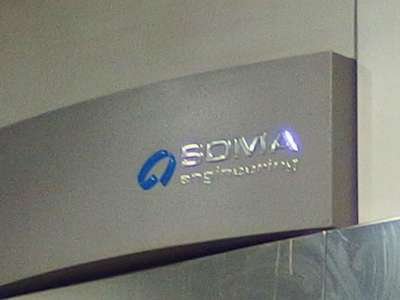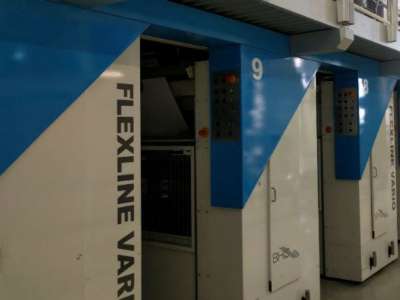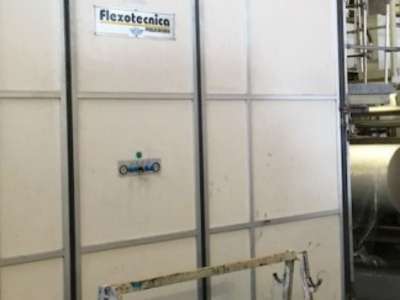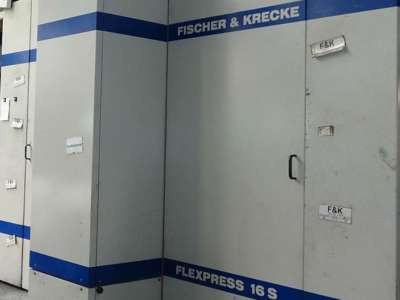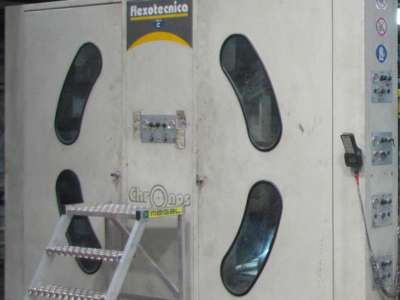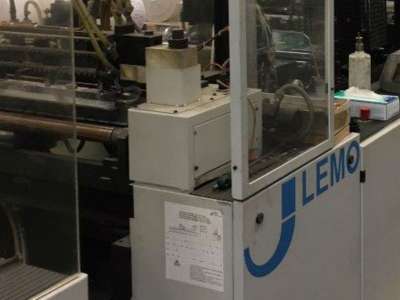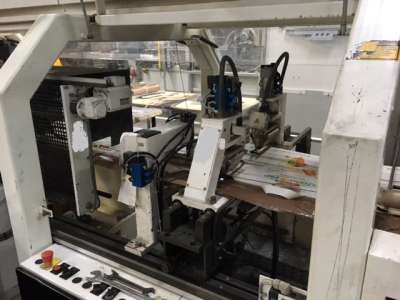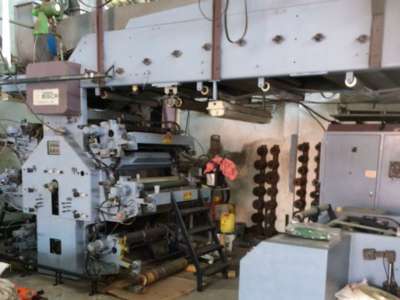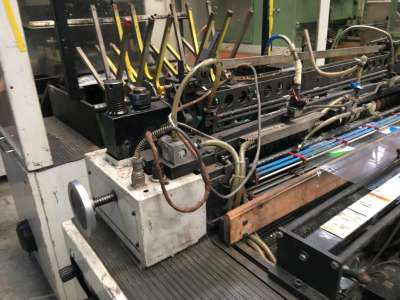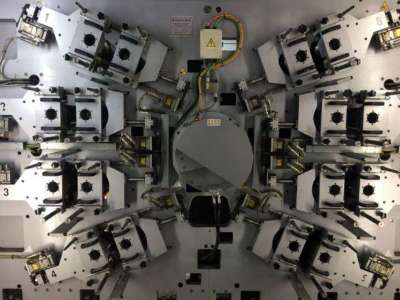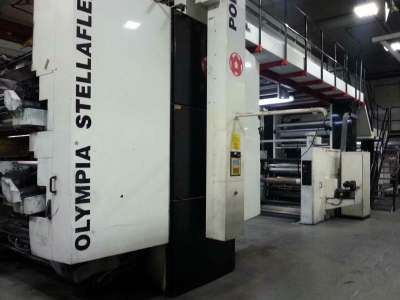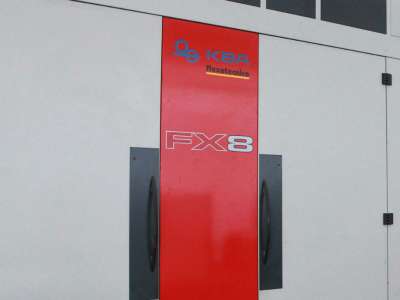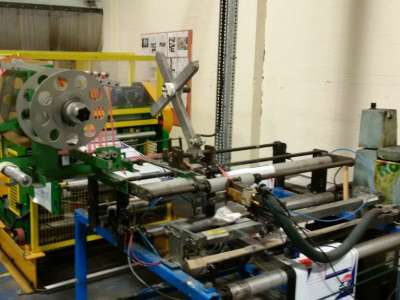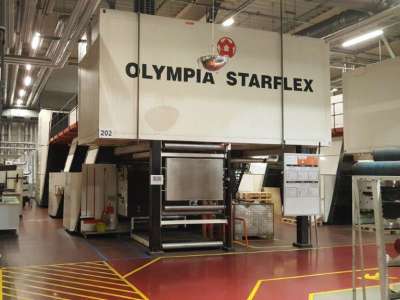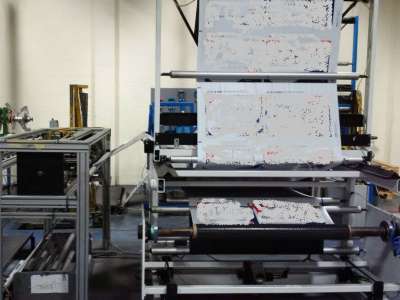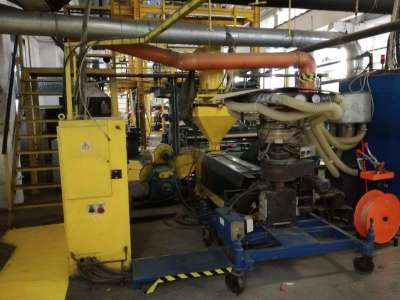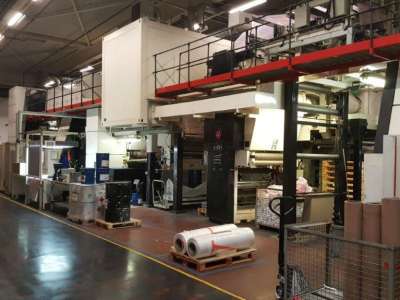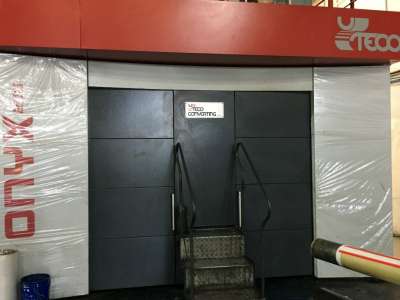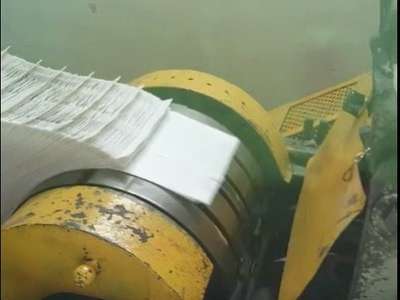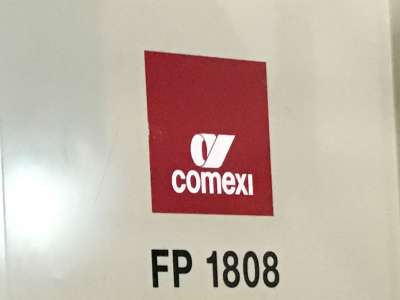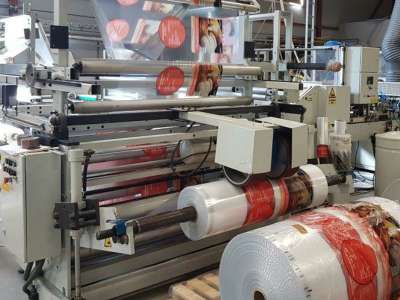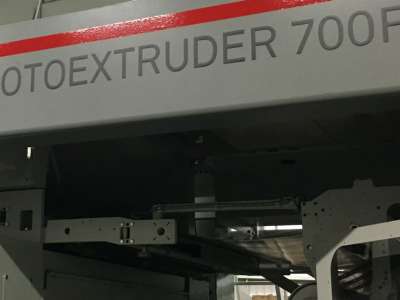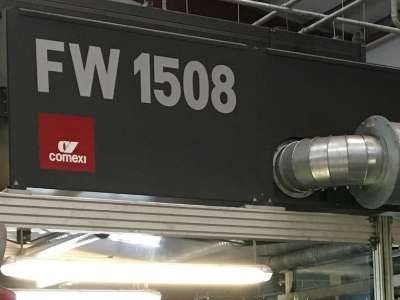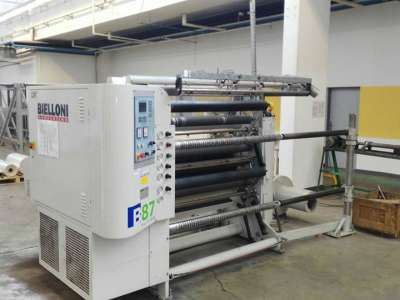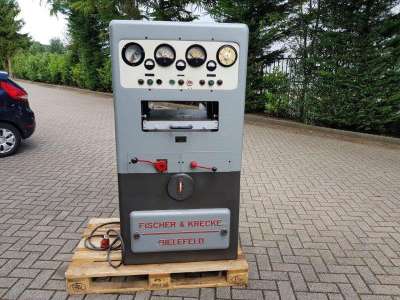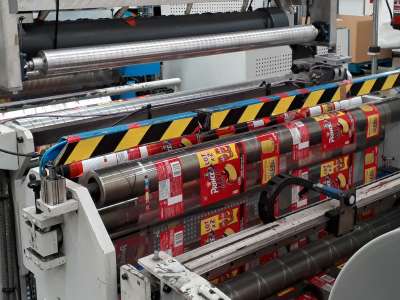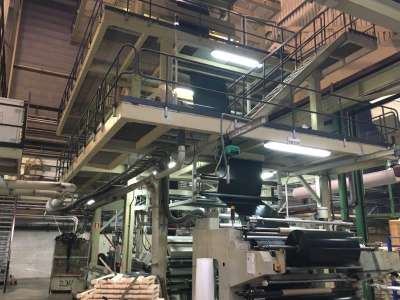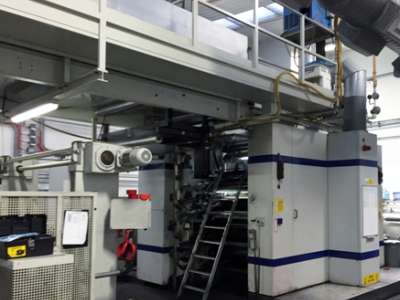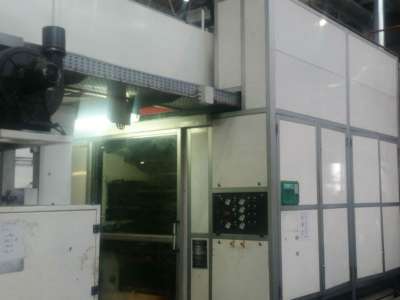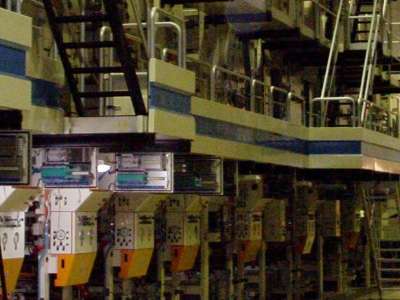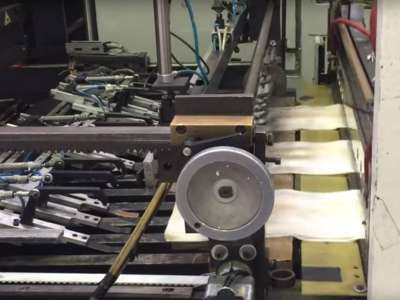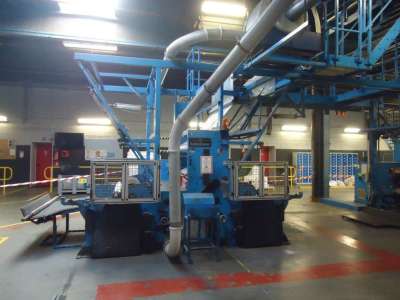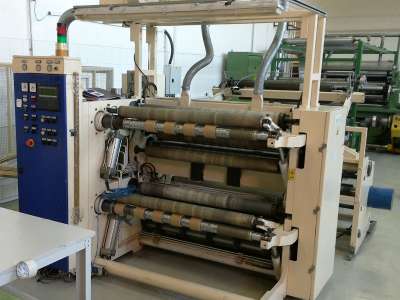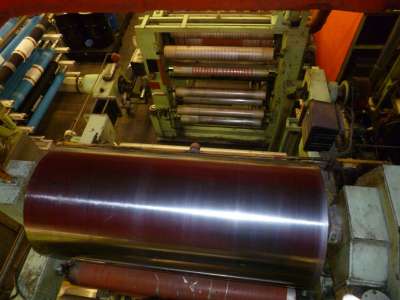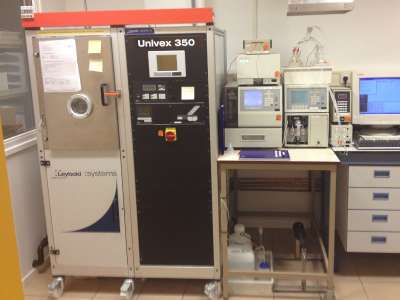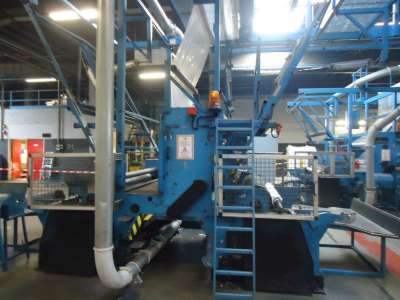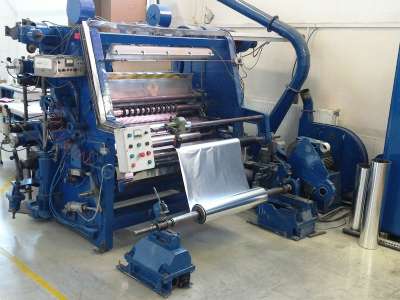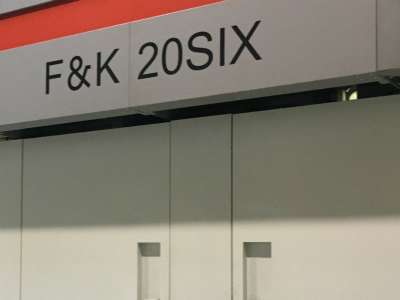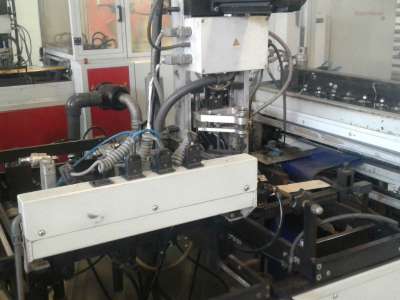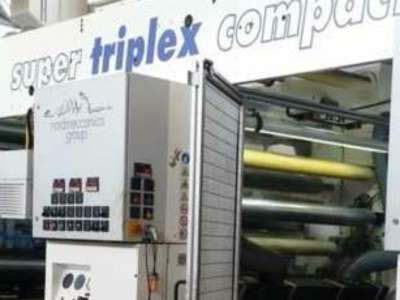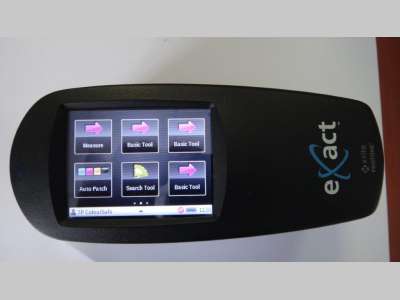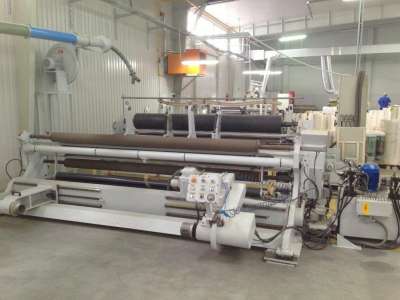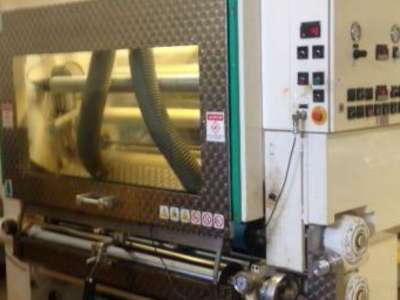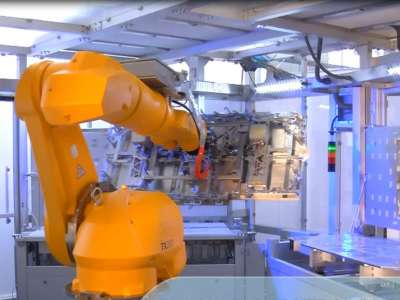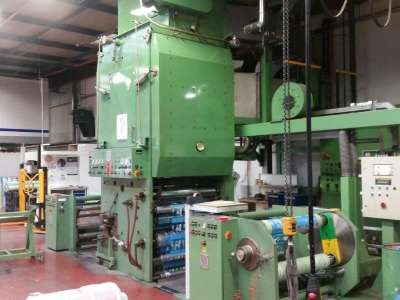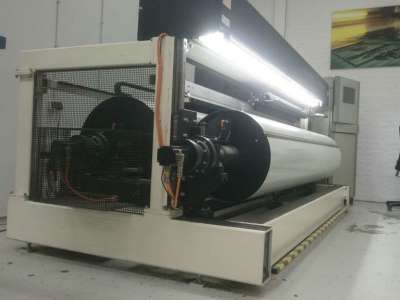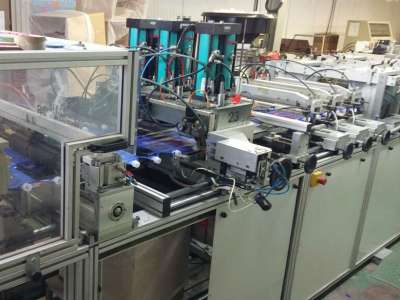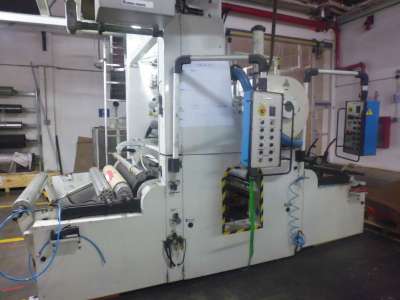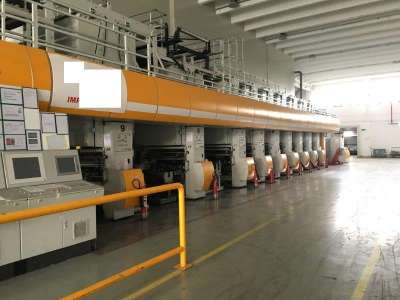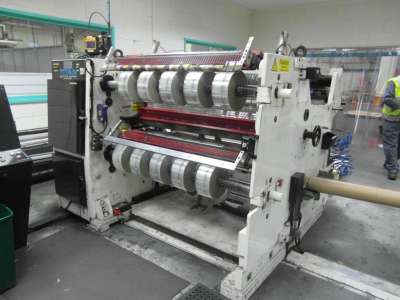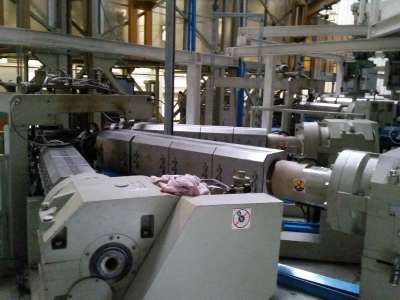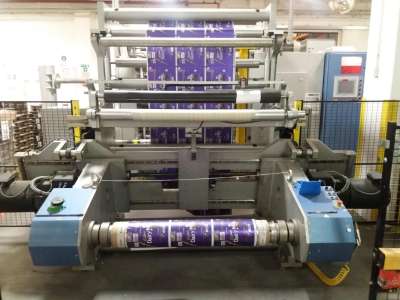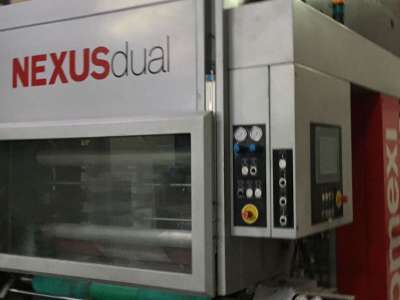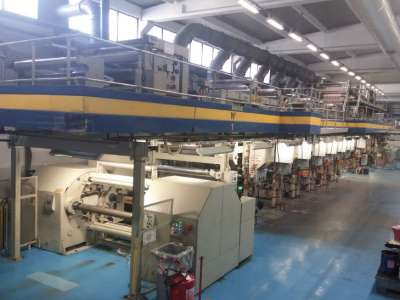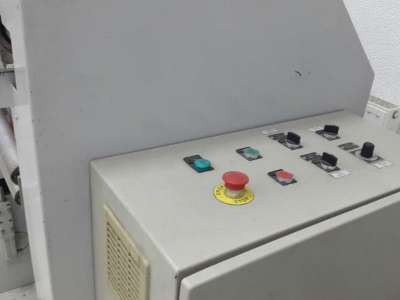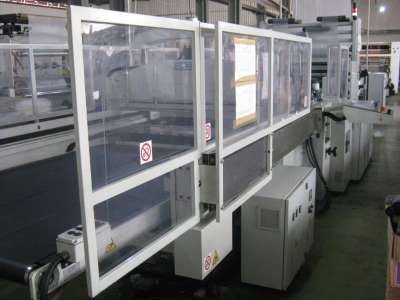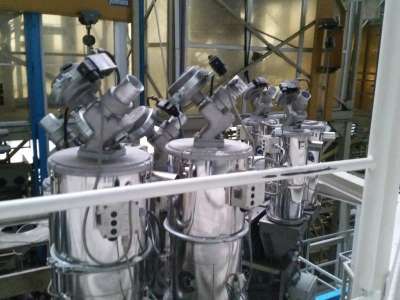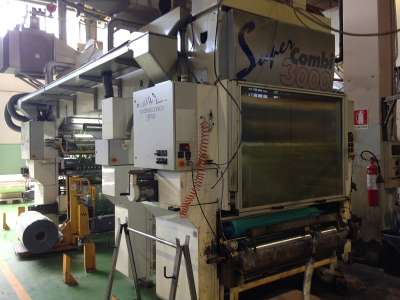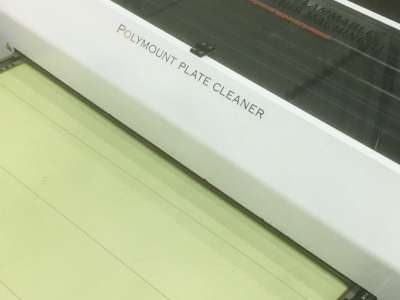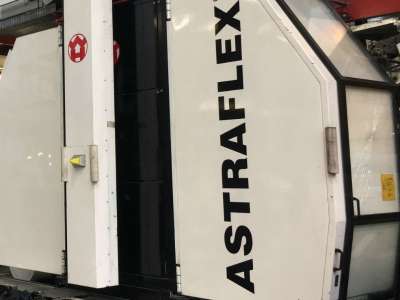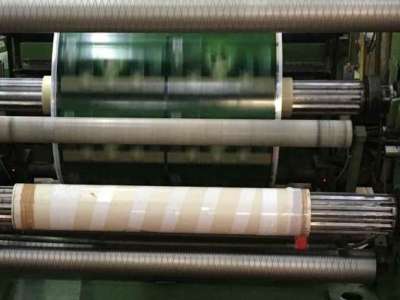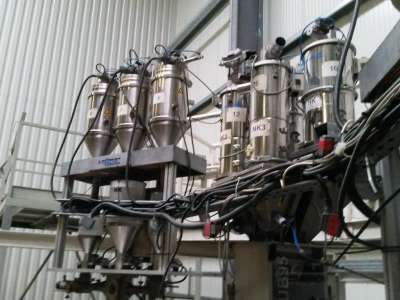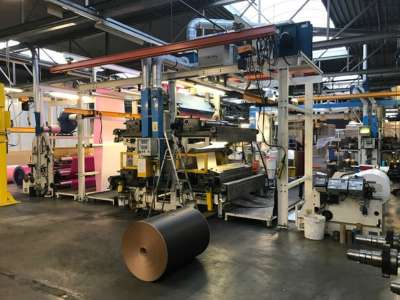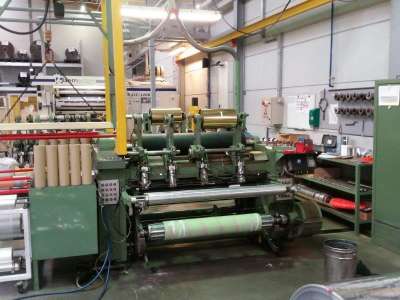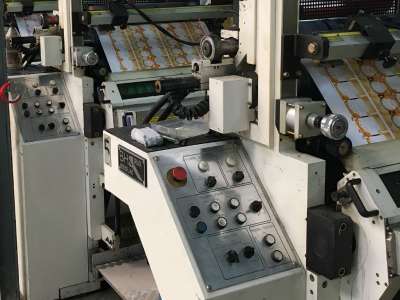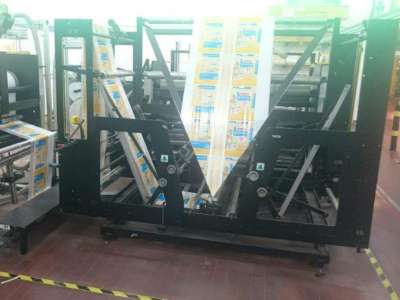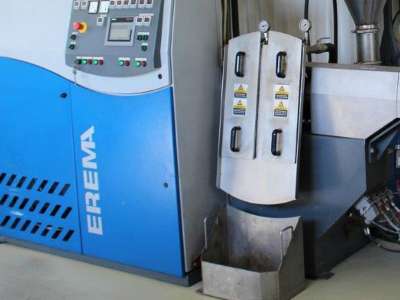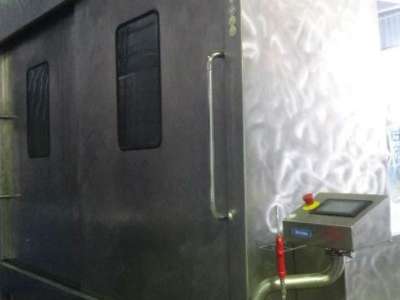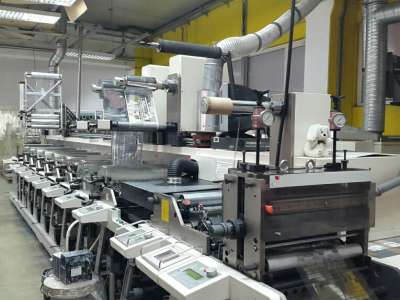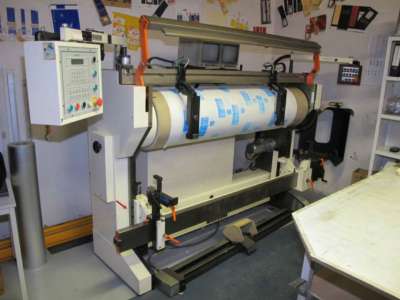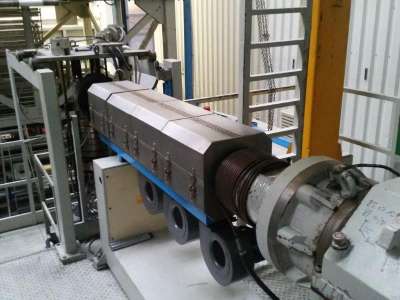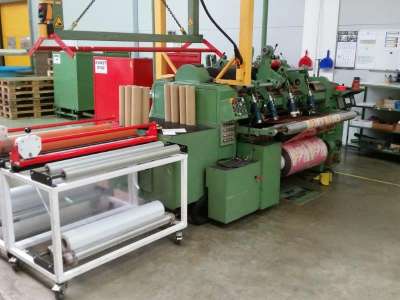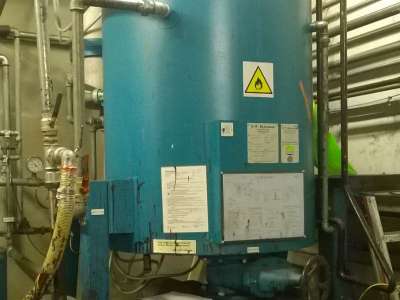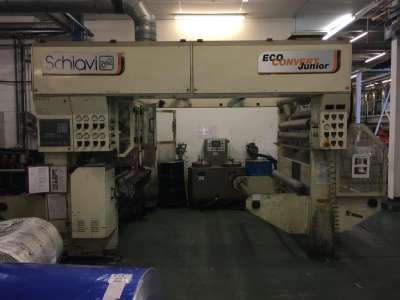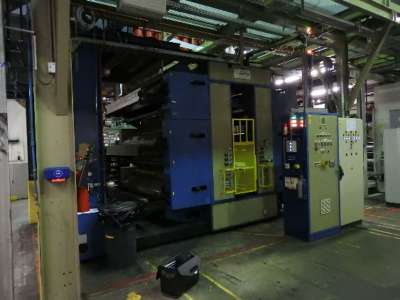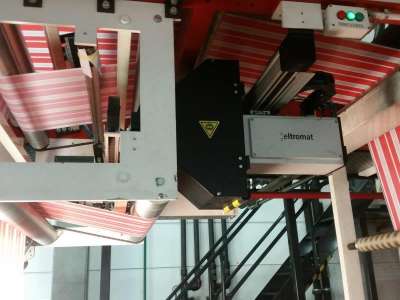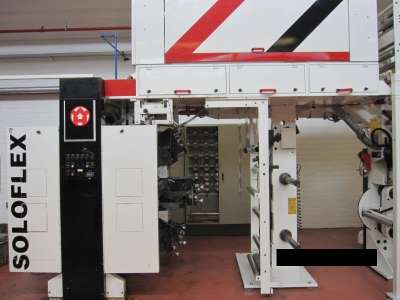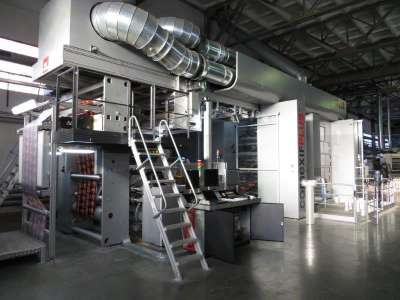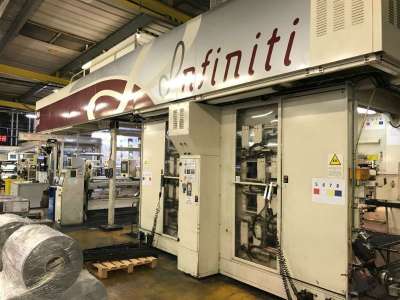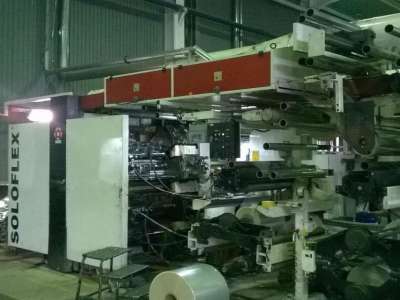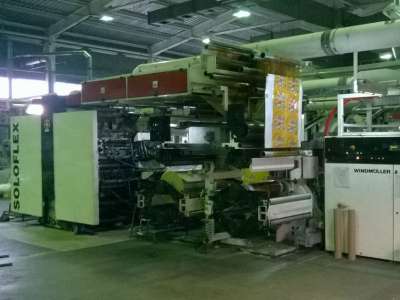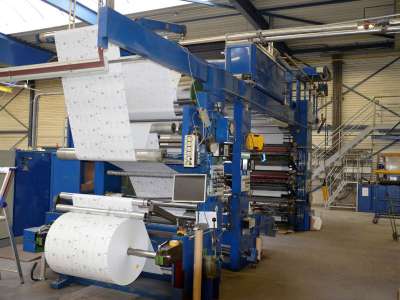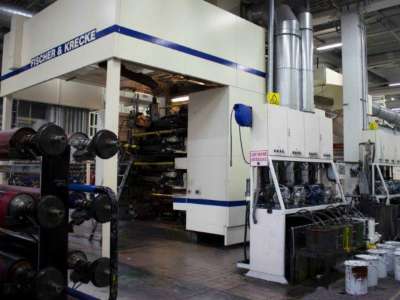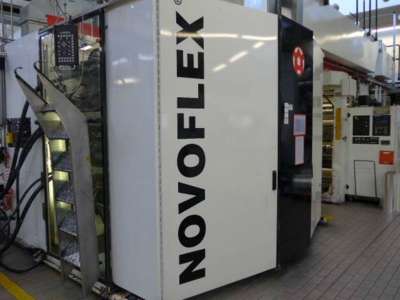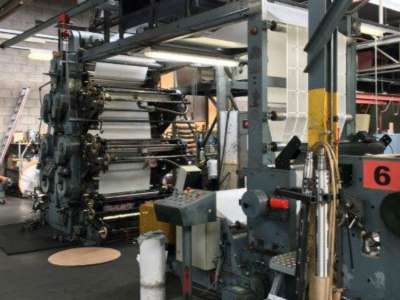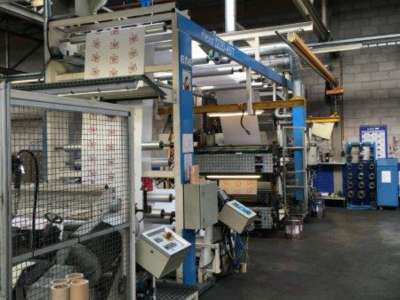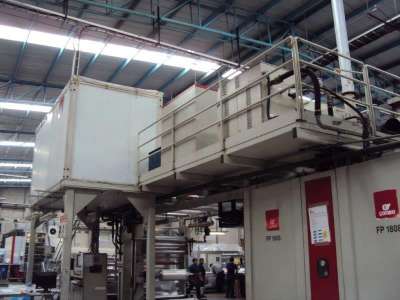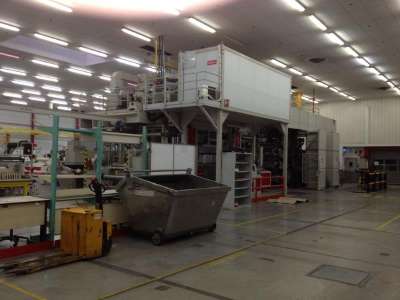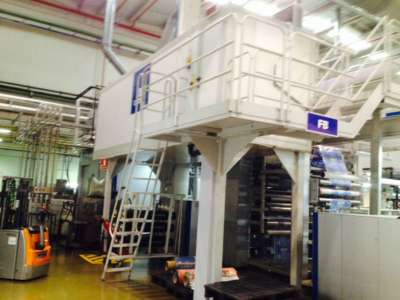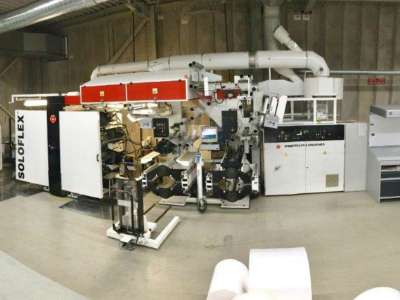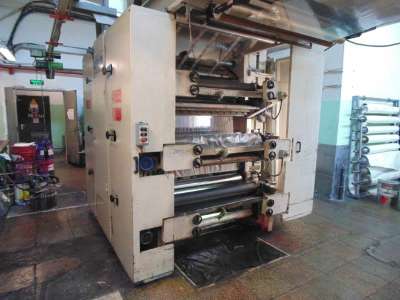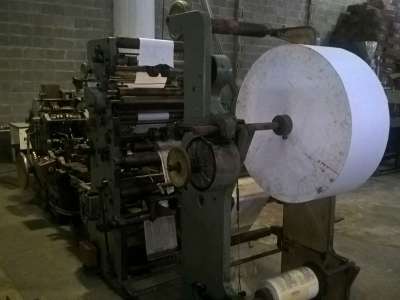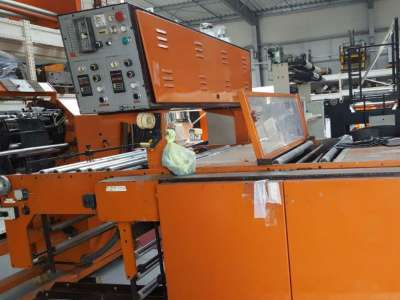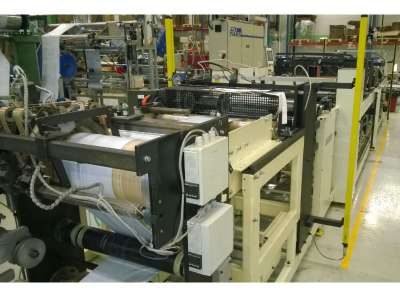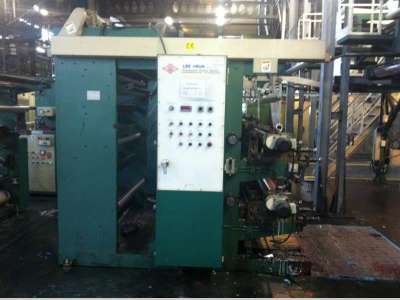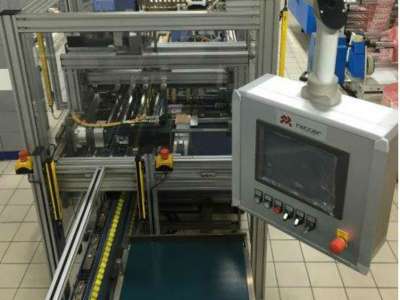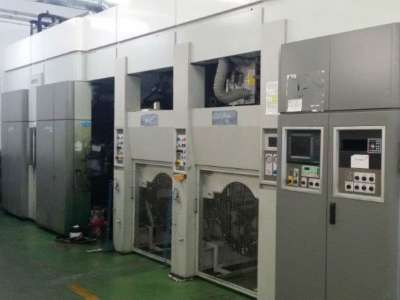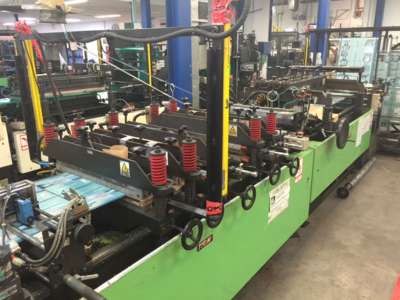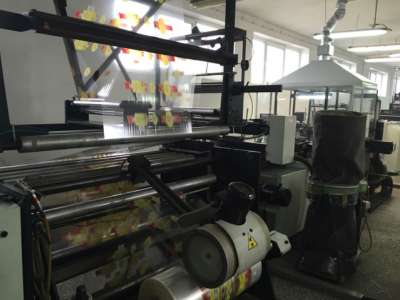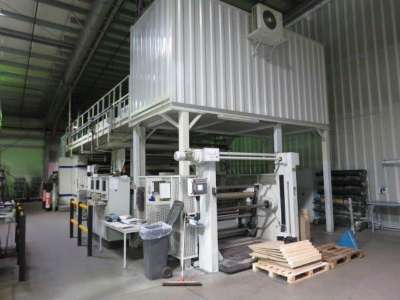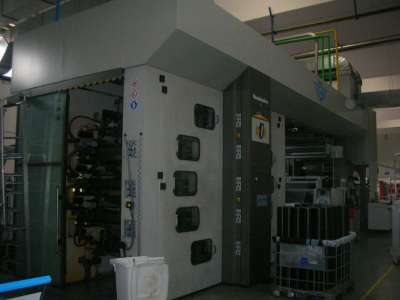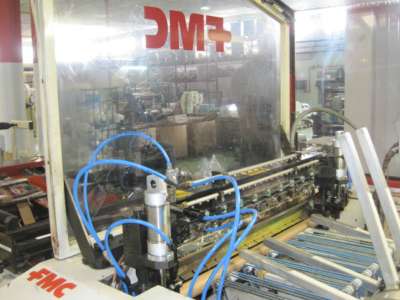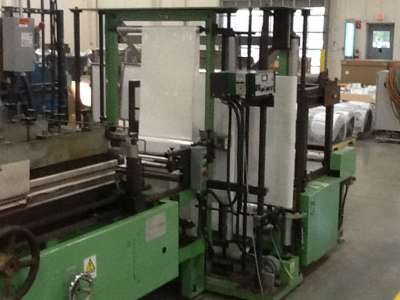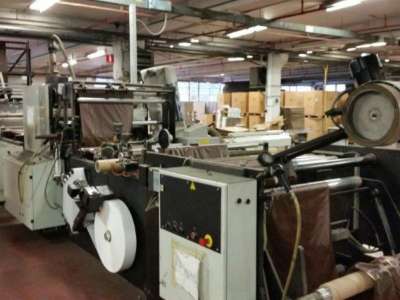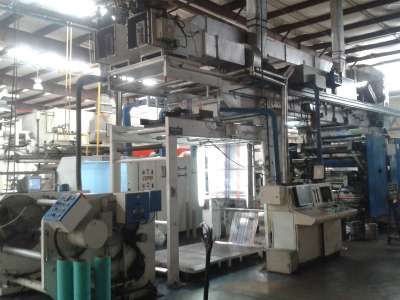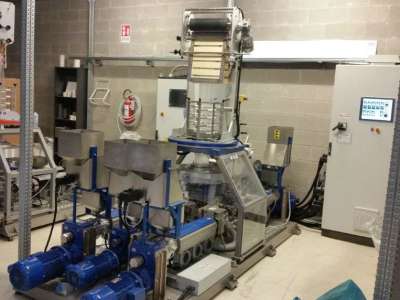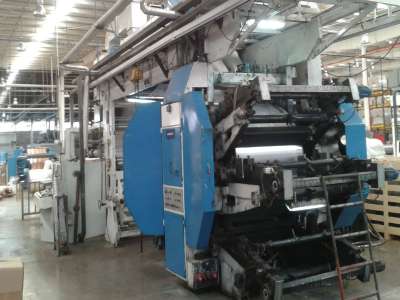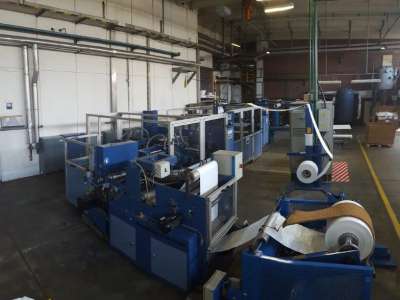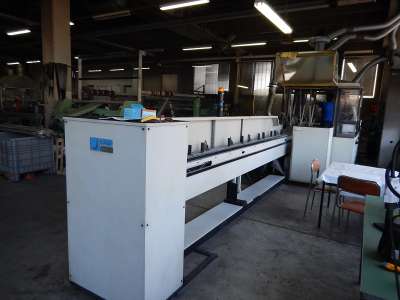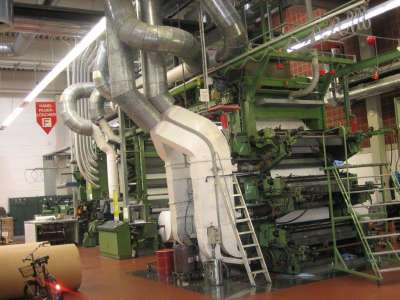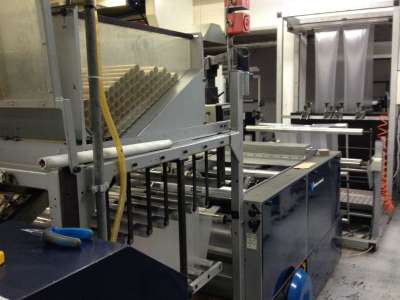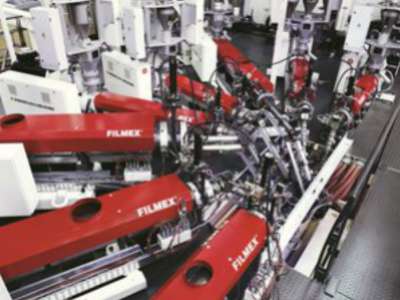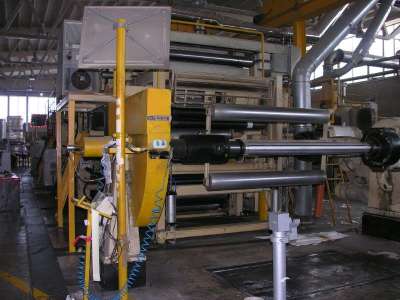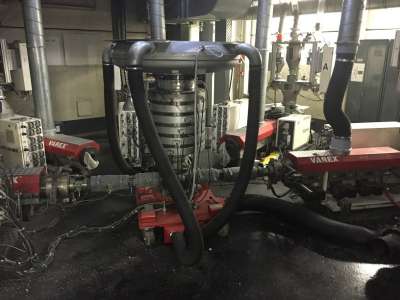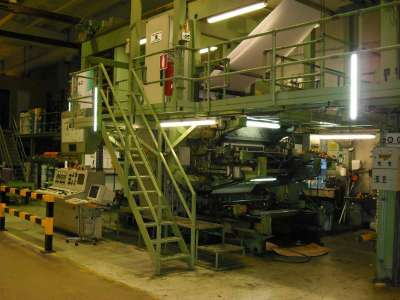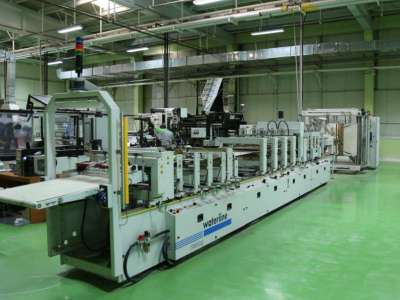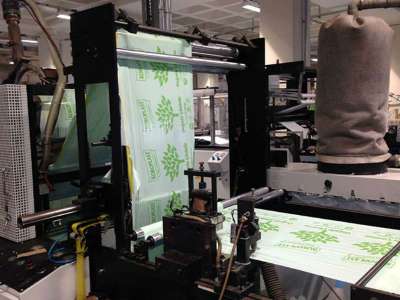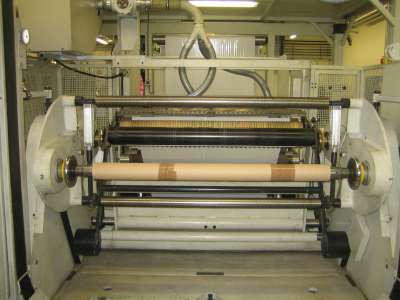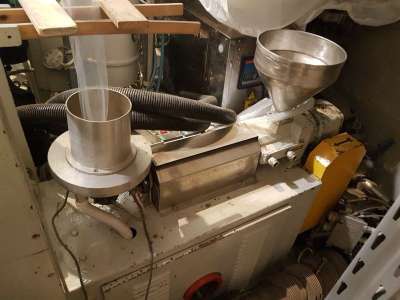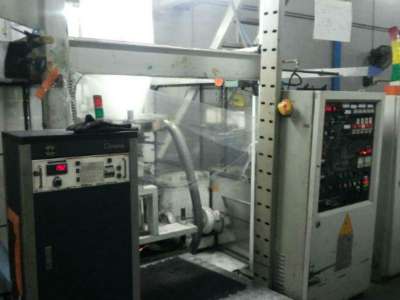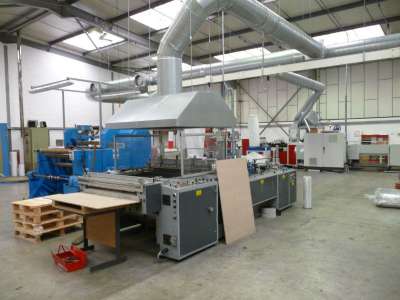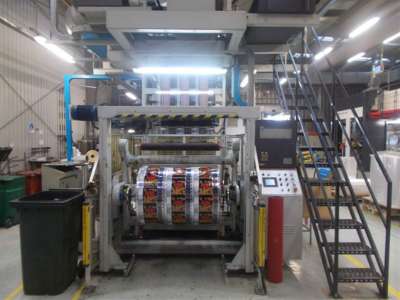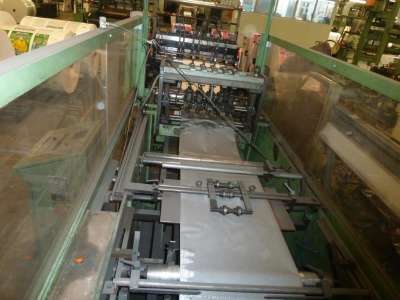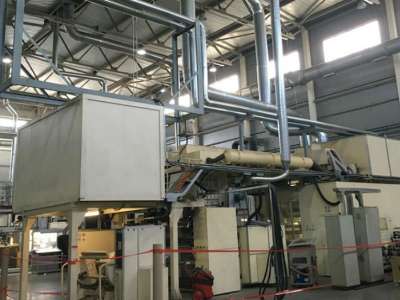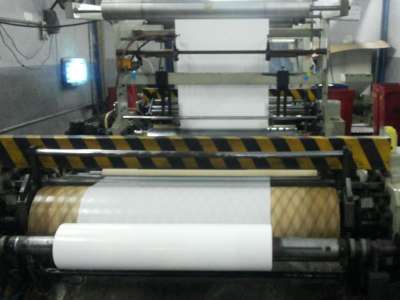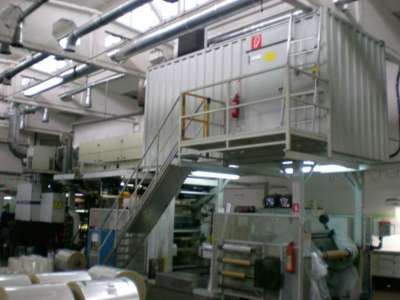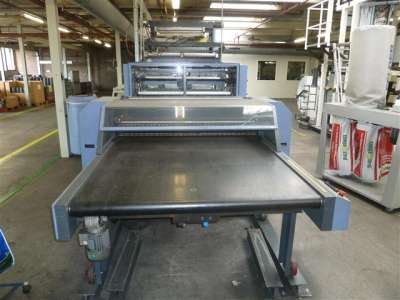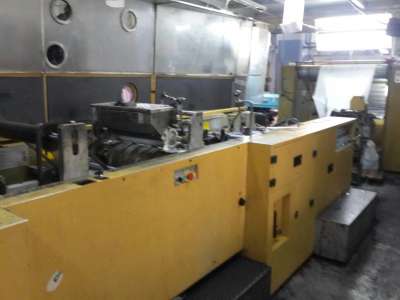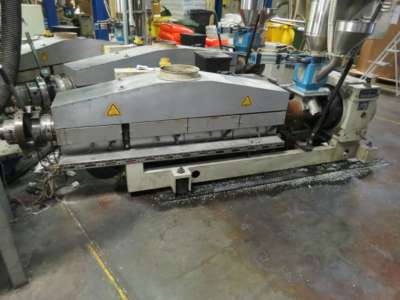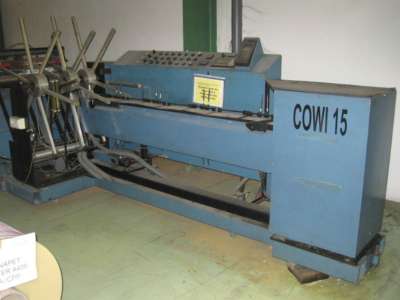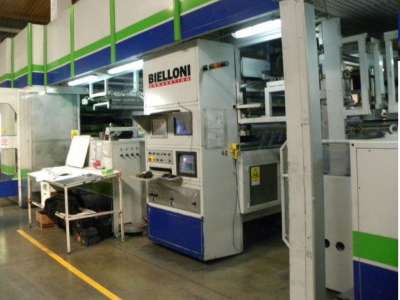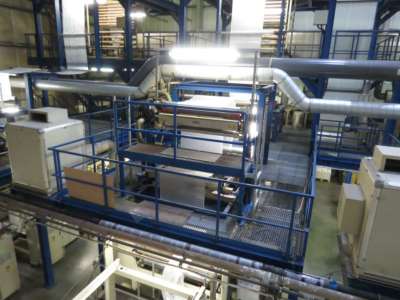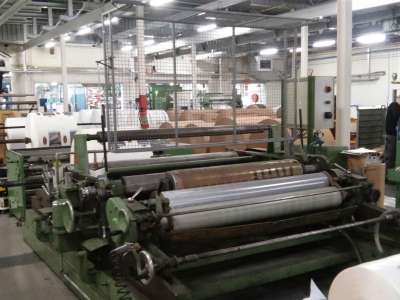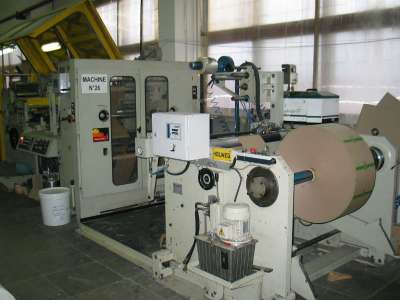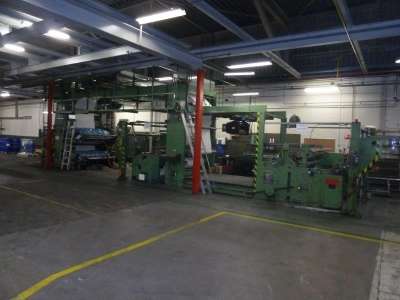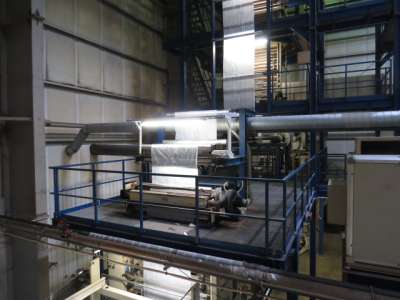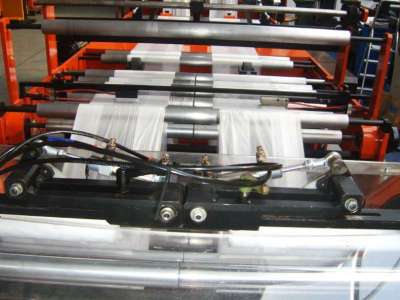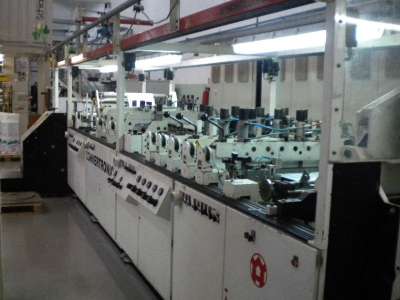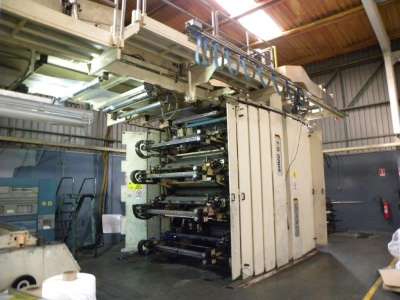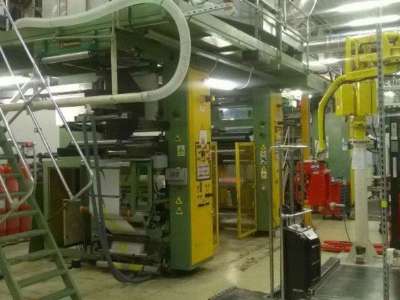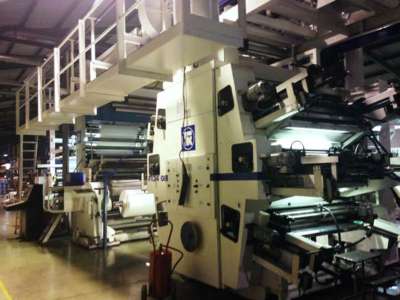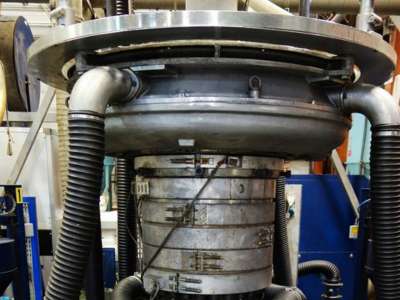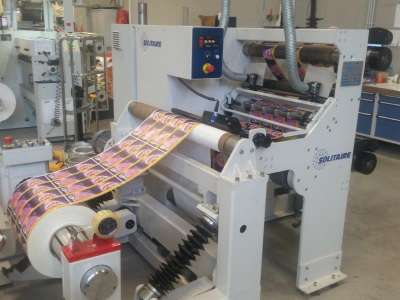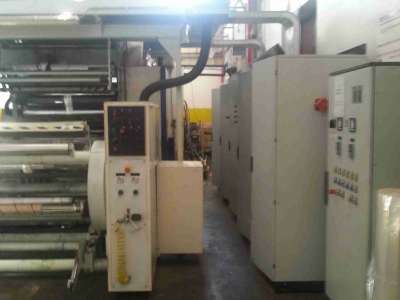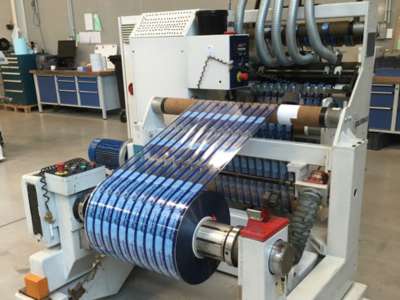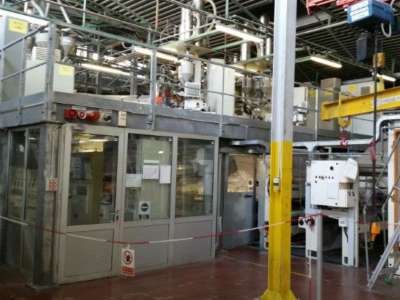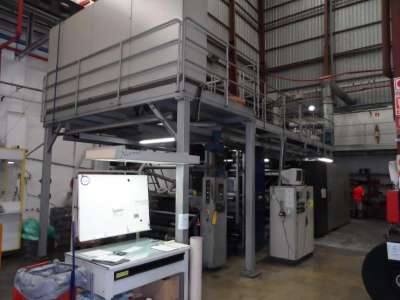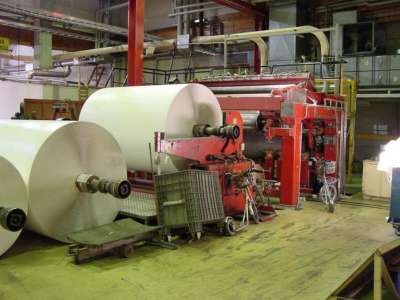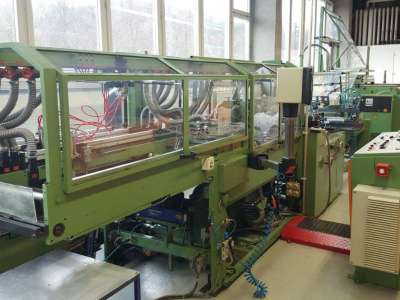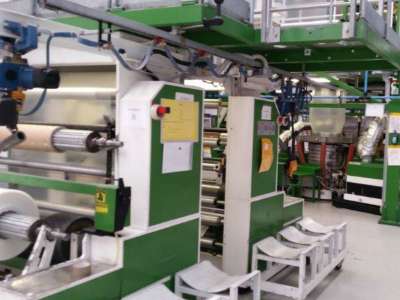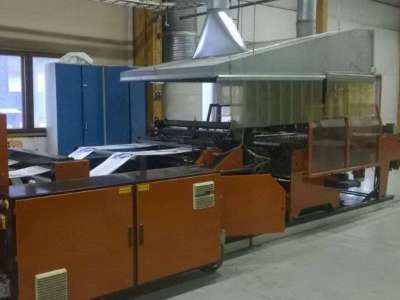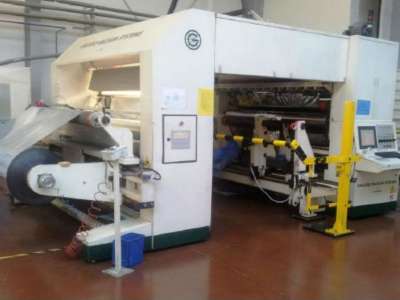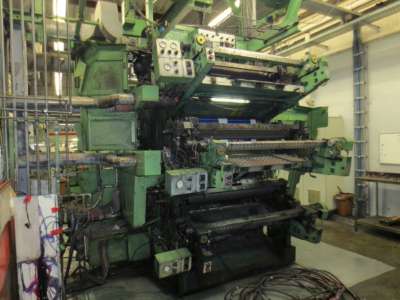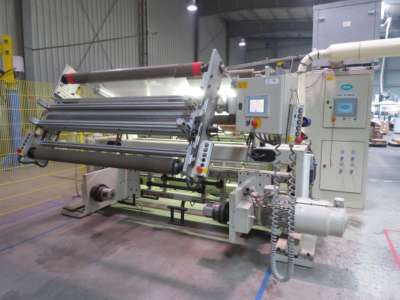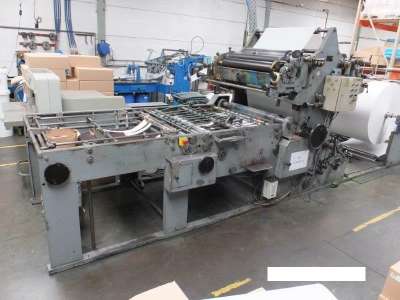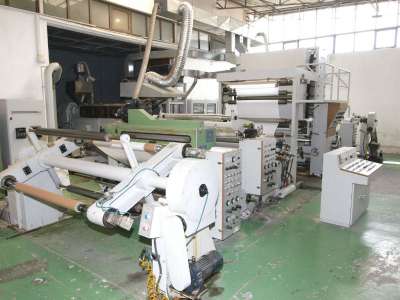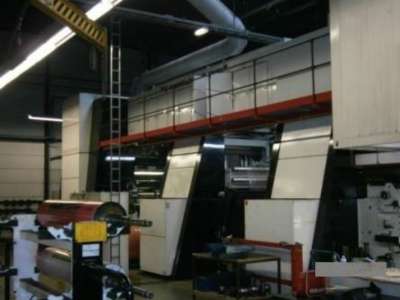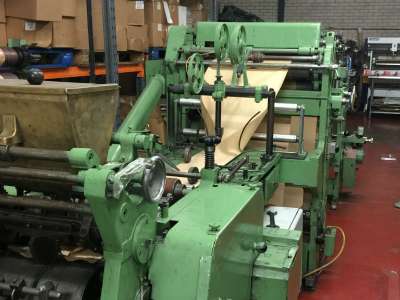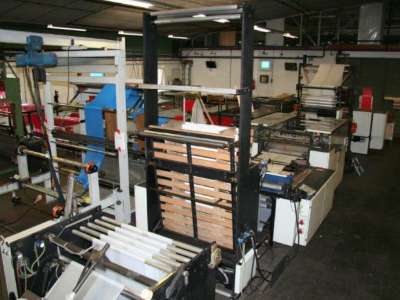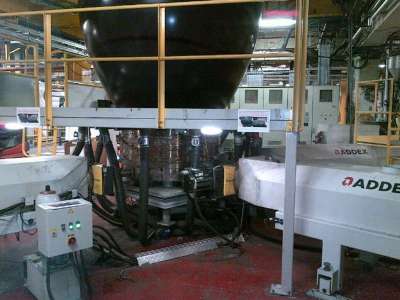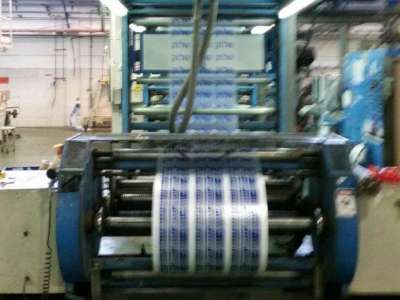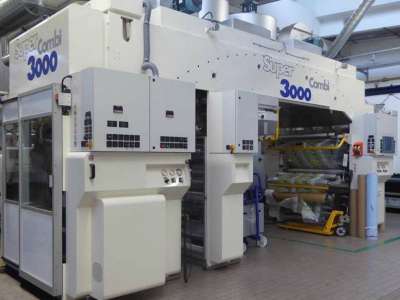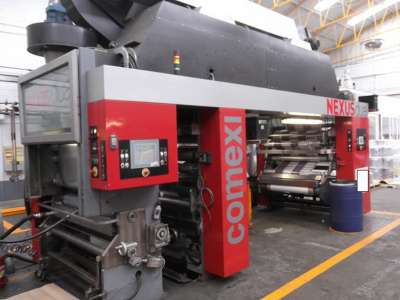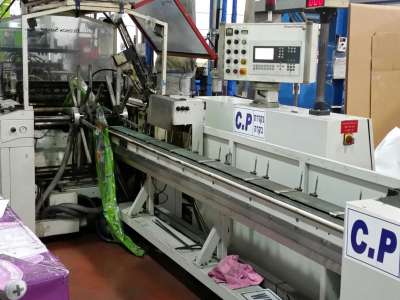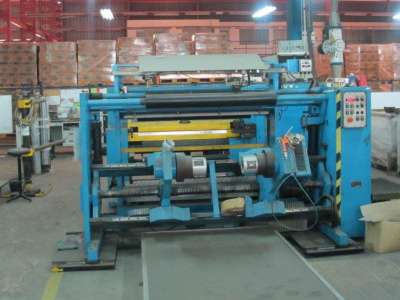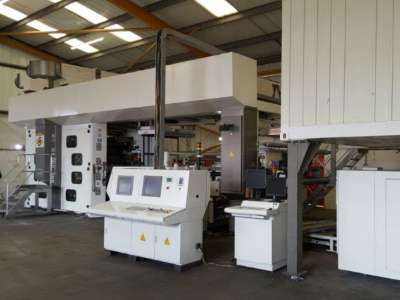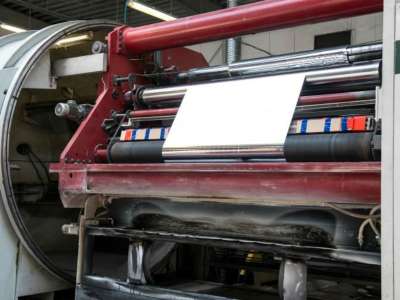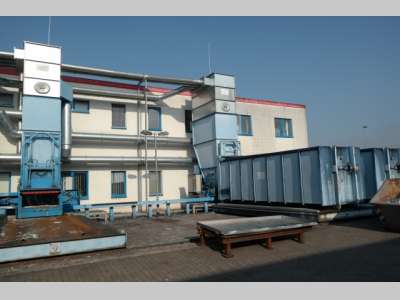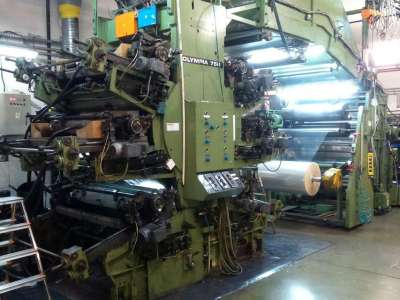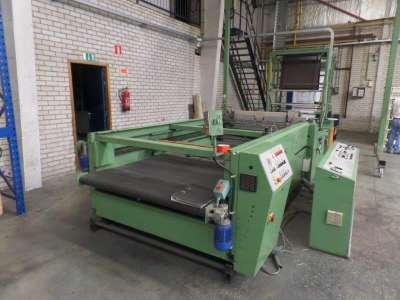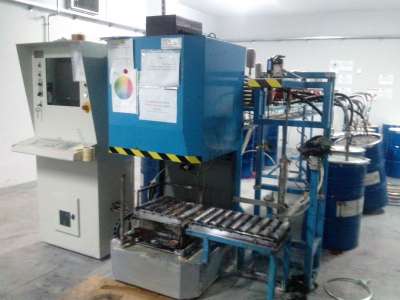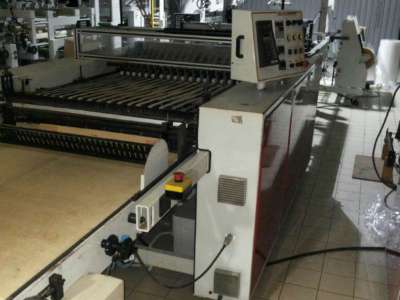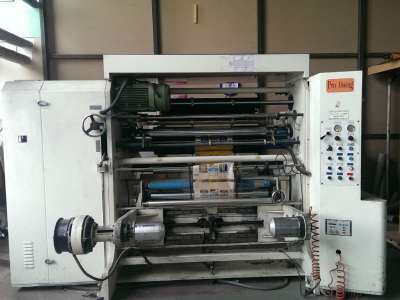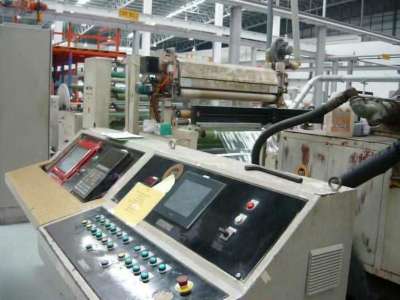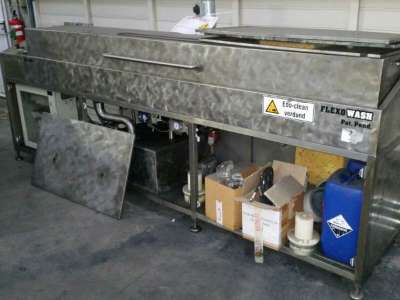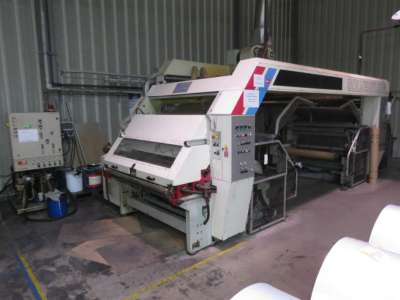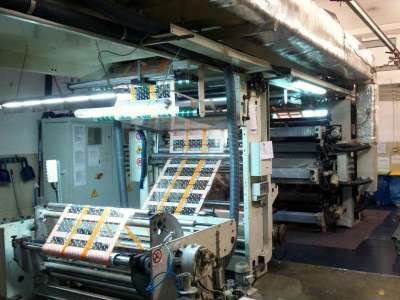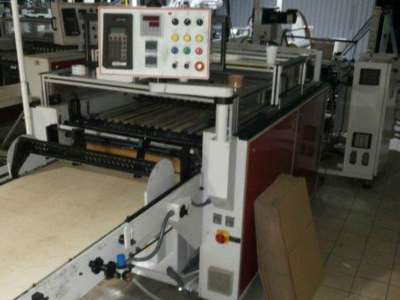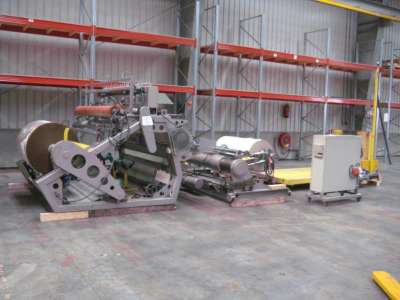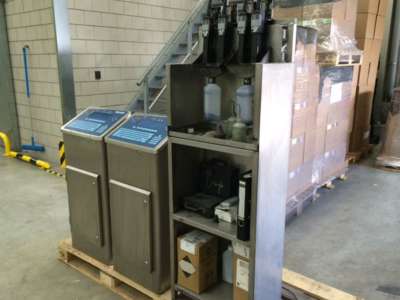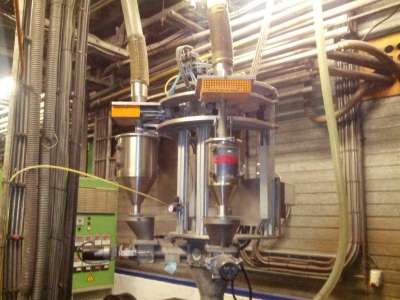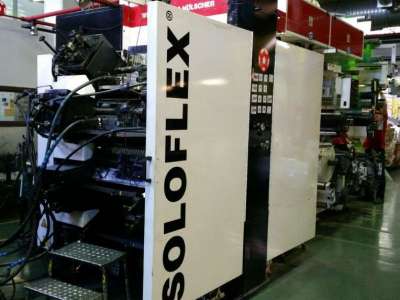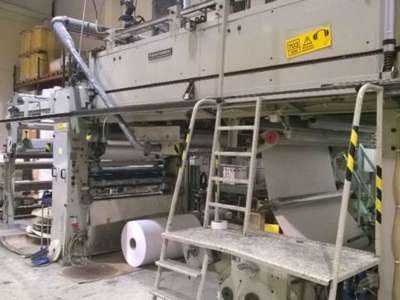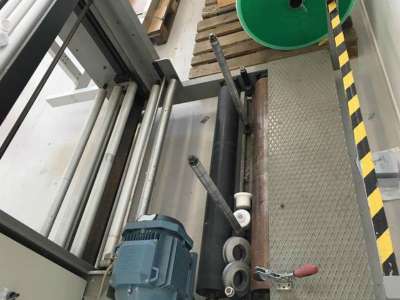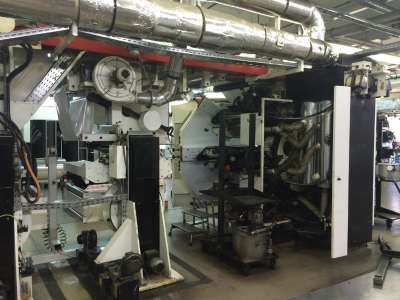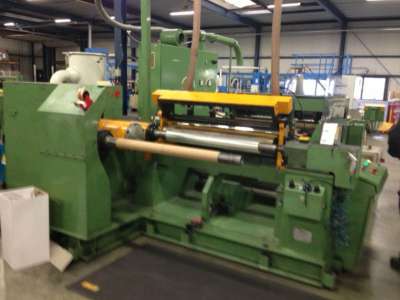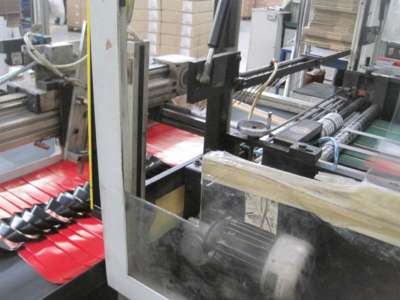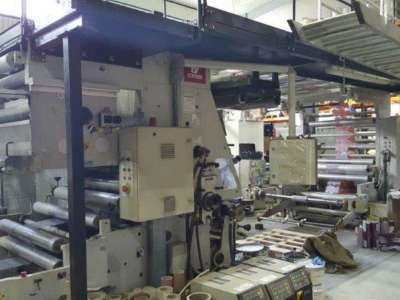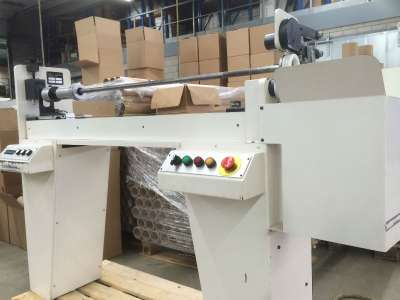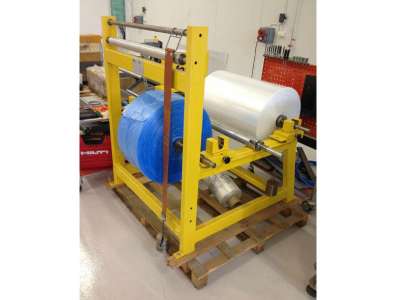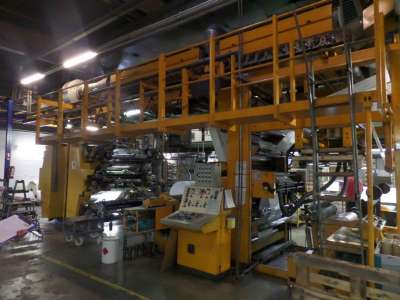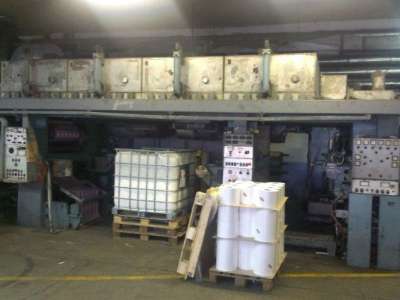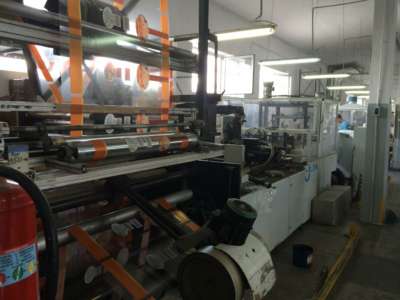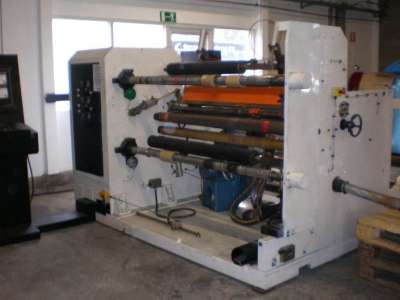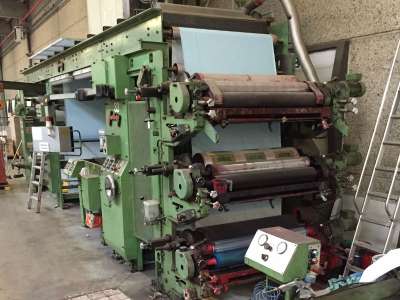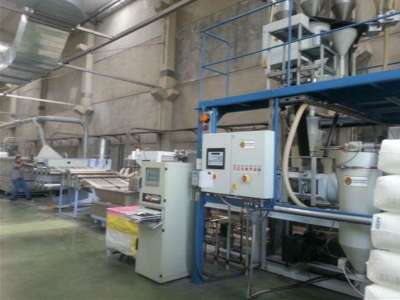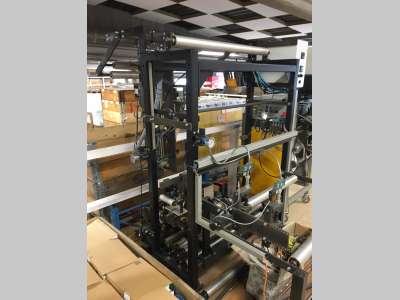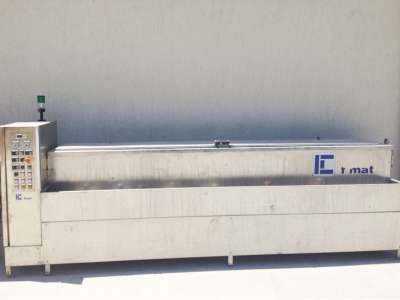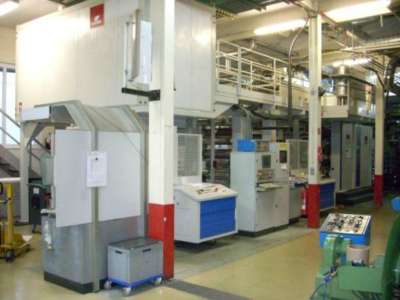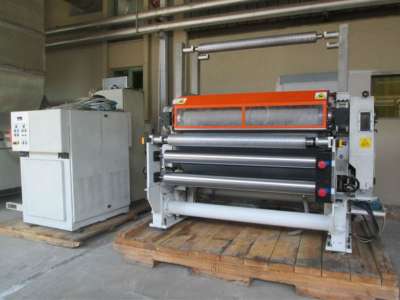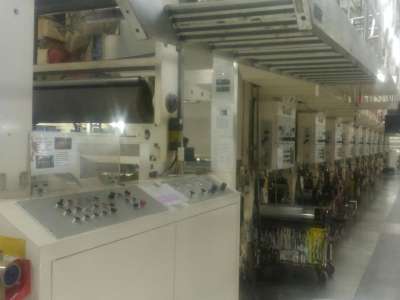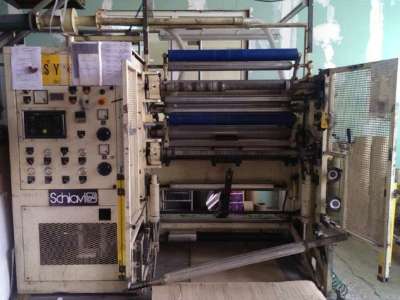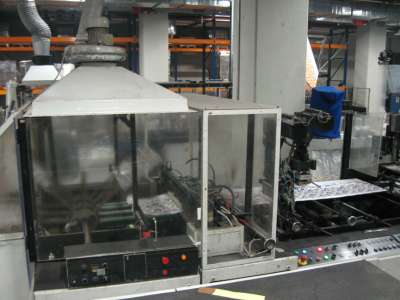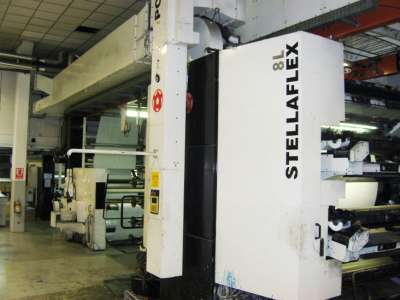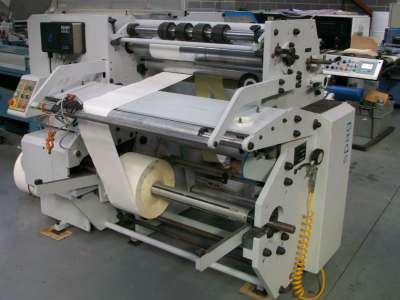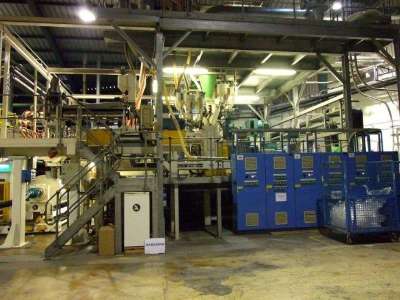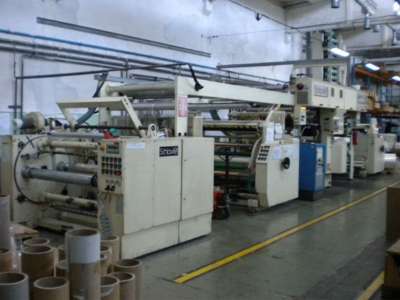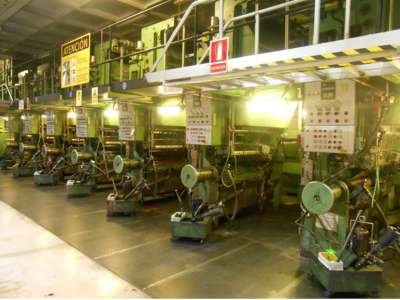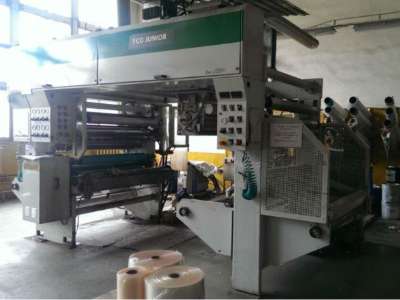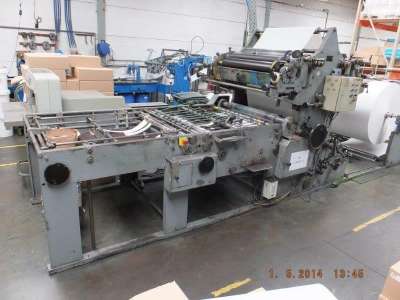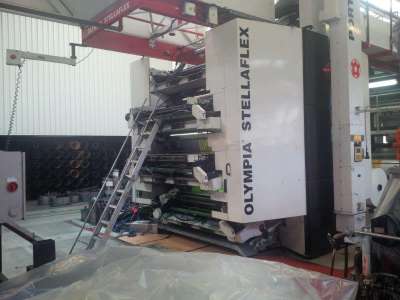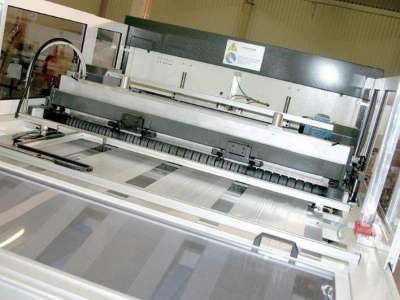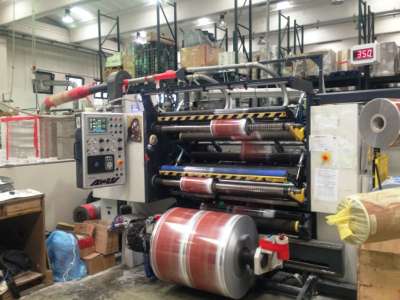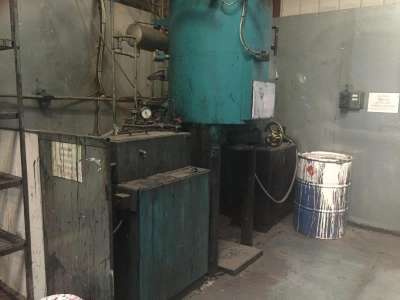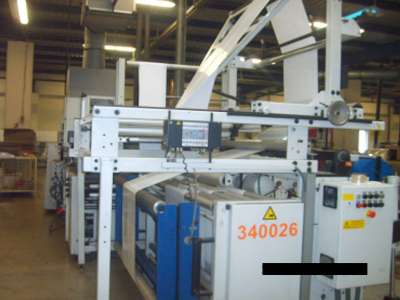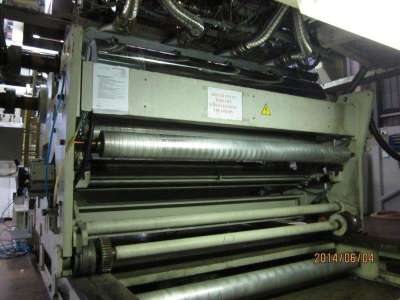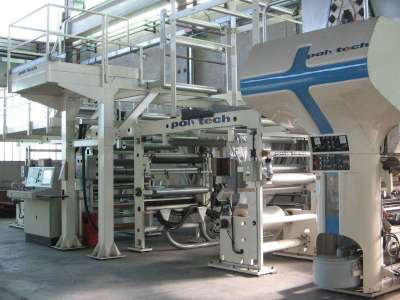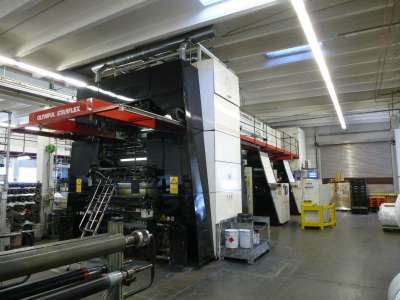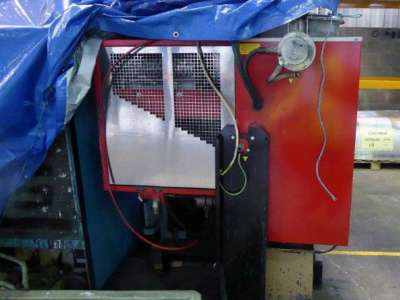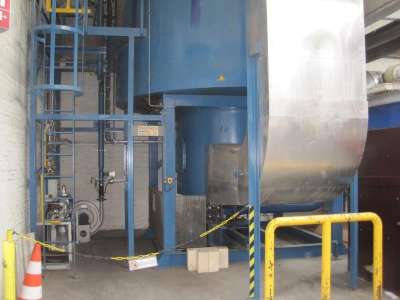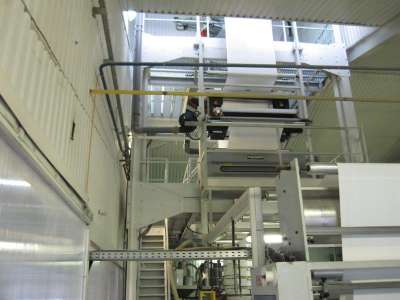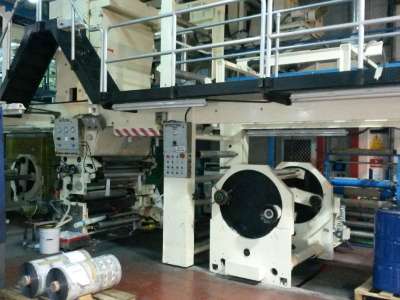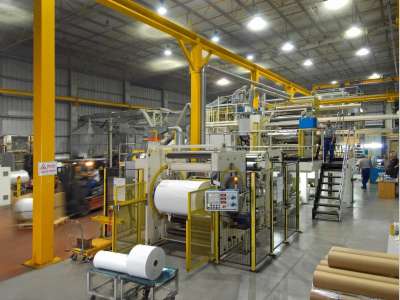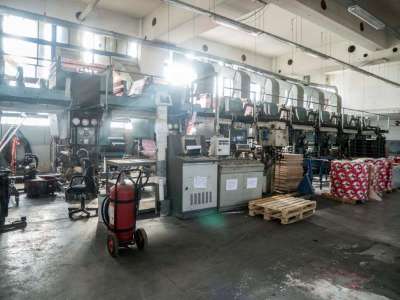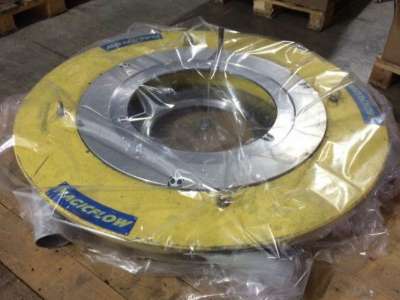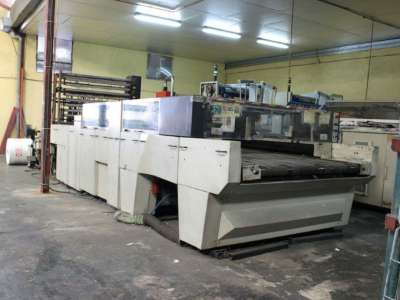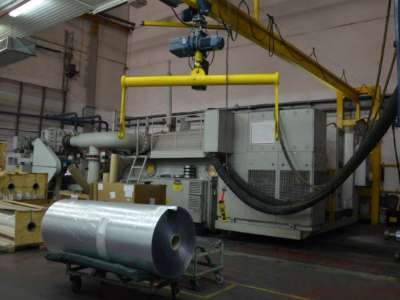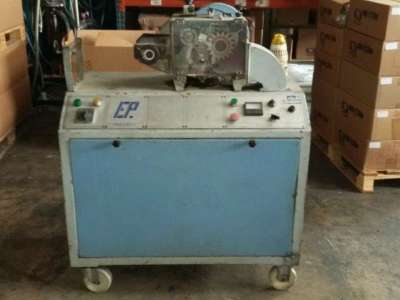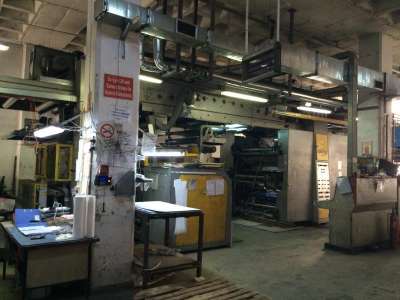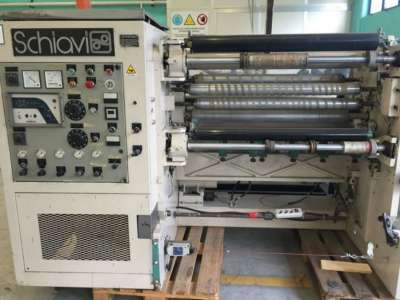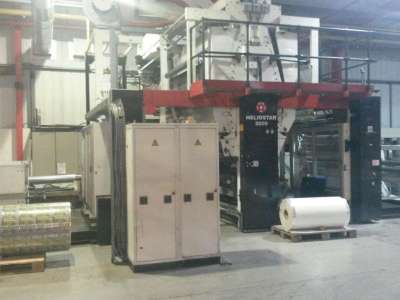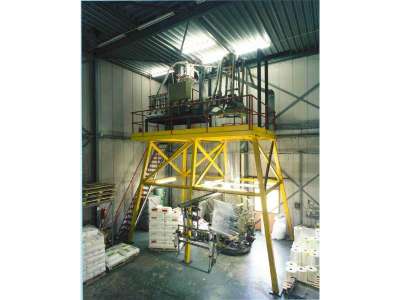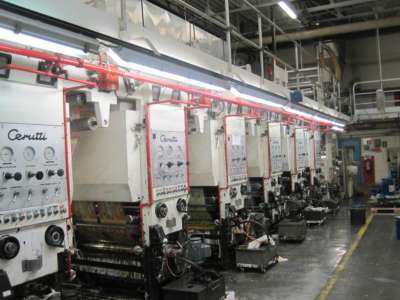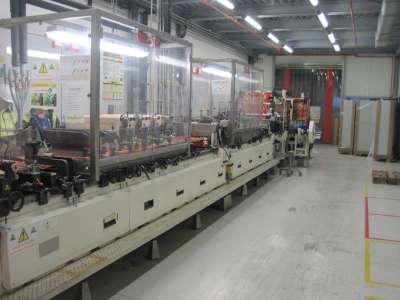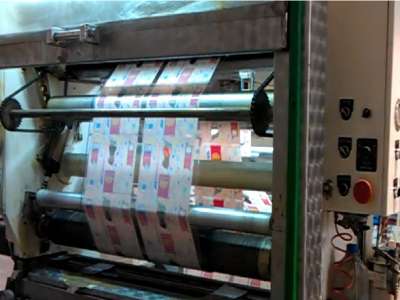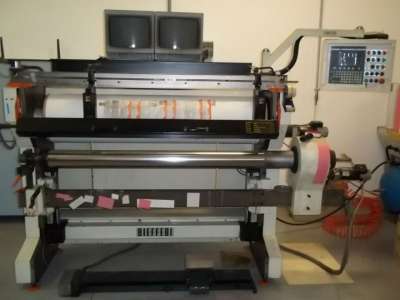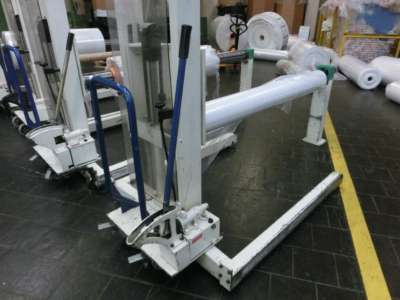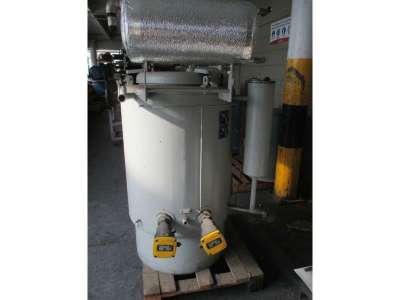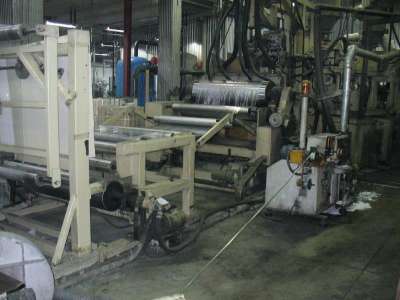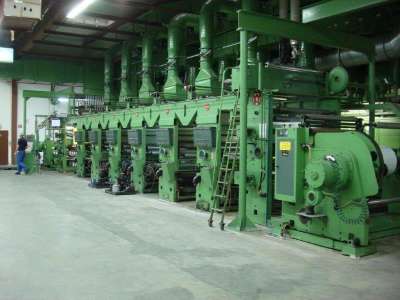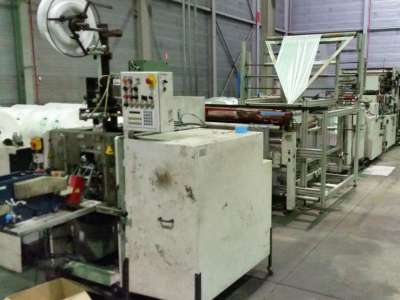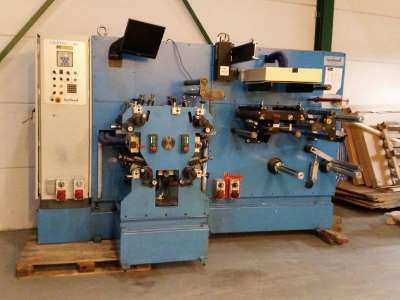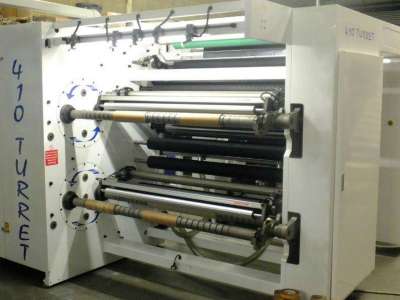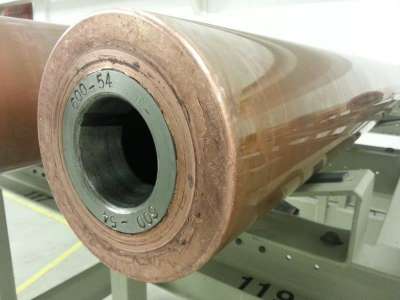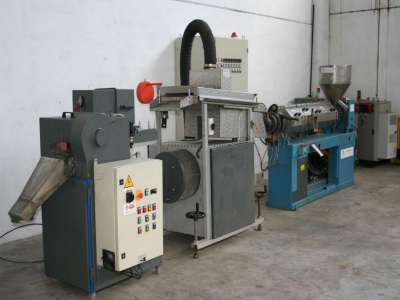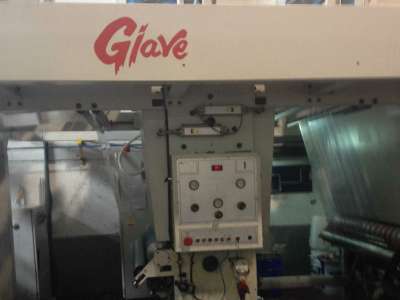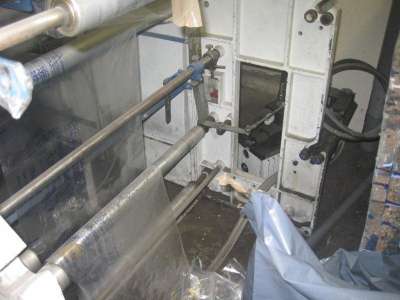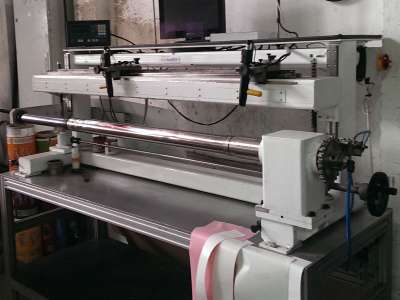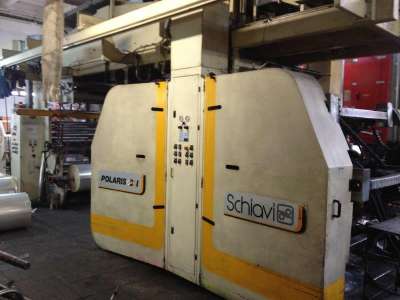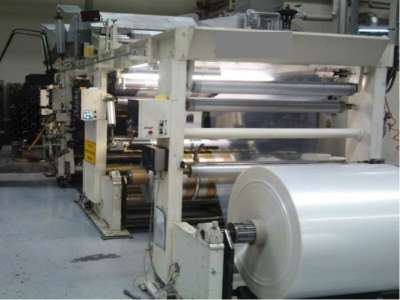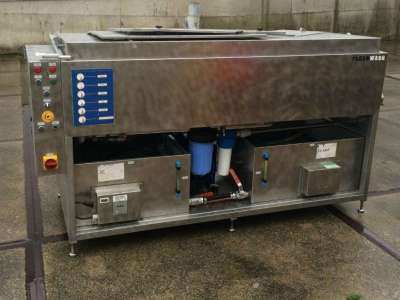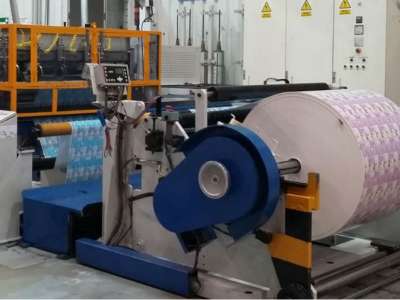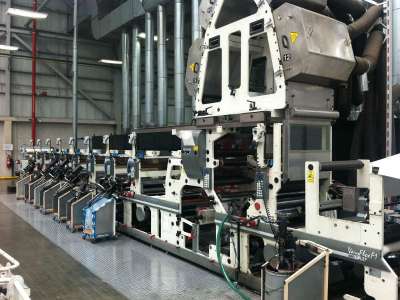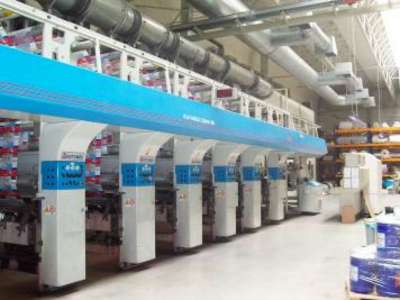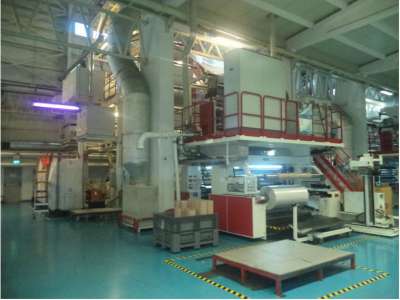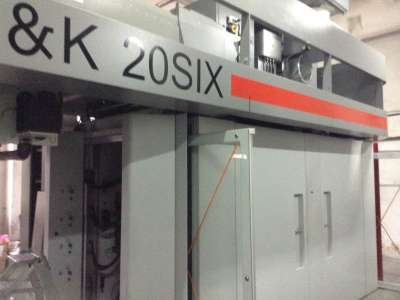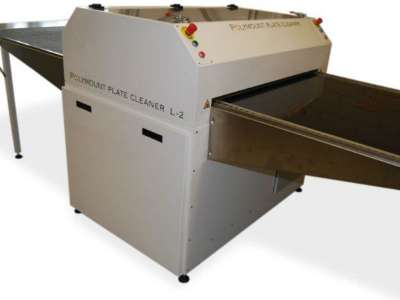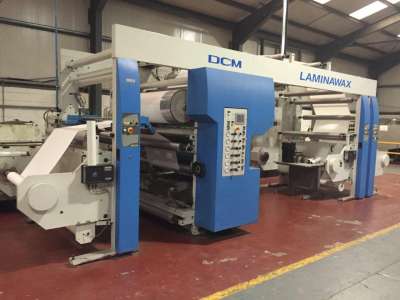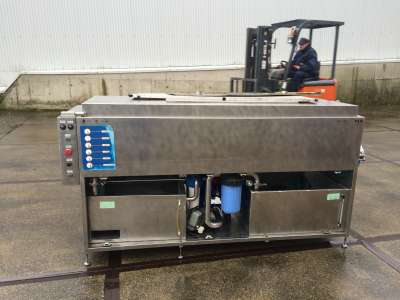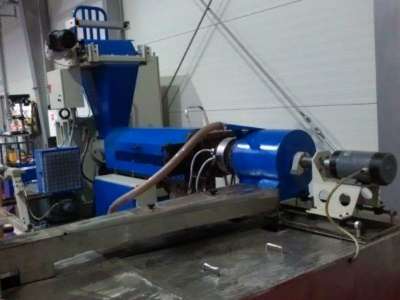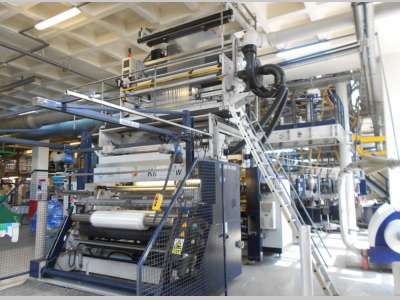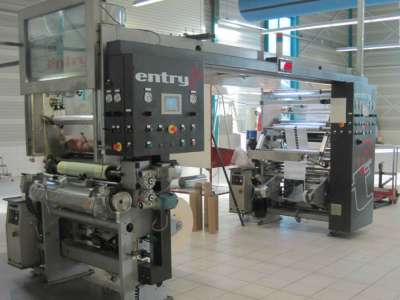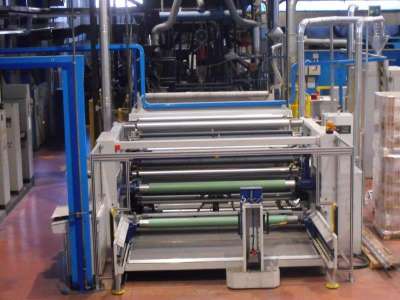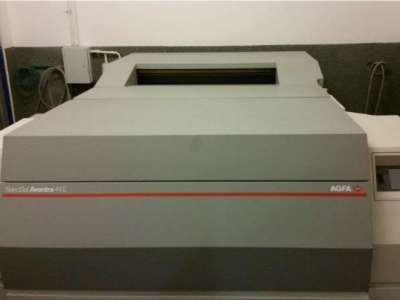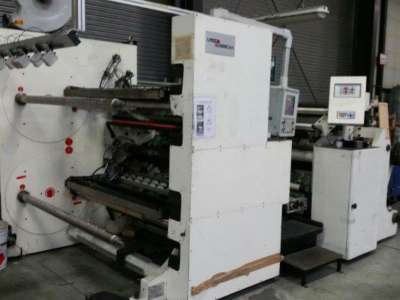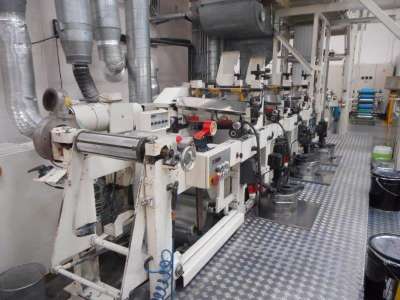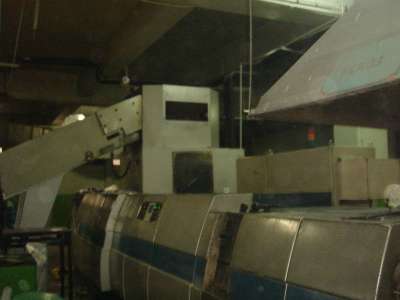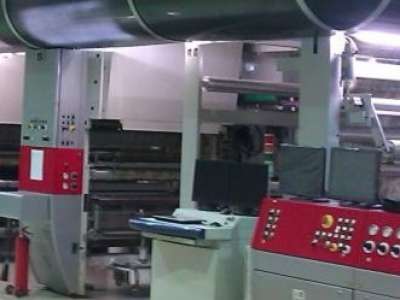Sold machines
Galred has acted as an intermediary in the sales of hundreds of machines in the past few years. Below you can find a selection of these sold machines. Interested in which machines are available for sale at the moment? In our machine list you can find the current offer of used printing machines , bag making machines , extruders , slitters and more. If you are interested in selling one of your own surplus machines you can read more about the sales opportunities or contact us for more information.
Sold
Comexi FL2508 flexo gearless printing press
Year: 2005
Sold
Mamata Vega 800-S sideseal bagmaking machine
Year: 2005
Sold
Titan ER610 slitter rewinder
Year: 2016
Sold
Totani FD3500L
Year: 2007
Sold
Bimec TF-60.2 slitter rewinder
Year: 2017
Sold
Roan RS35-24 pouch bagmaking machine
Year: 2007
Sold
Nordmeccanica Super Simplex solventless laminator
Year: 2014
Sold
Roan RS35-30 pouch bagmaking machine
Year: 2006
Sold
Roan RSU30 pouch bagmaking machine
Year: 2006
Sold
Ashe Sapphire slitter rewinder
Year: 2003
Sold
Bobst 20six flexo gearless printing press-2
Year: 2014
Sold
Nordmeccanica Simplex solventless laminator
Year: 1999
Sold
Roan RSU 30-105 pouch bagmaking machine
Year: 2005
Sold
Uteco Izar solventless laminator
Year: 2017
Sold
Atlas CSE620 slitter rewinder
Year: 2011
Sold
W&H Miraflex flexo gearless printing press
Year: 2015
Sold
Roan RS35 pouch bagmaking machine
Year: 2006
Sold
Titan SR6 slitter rewinder
Year: 2000
Sold
Schiavi Eco Convert solventless laminator
Year: 1998
Sold
Flexotecnica waterbased flexo printing press
Year: 2005
Sold
Nordmeccanica Super Combi 2000 solventless laminator
Year: 2004
Sold
Titan SR6 slitter rewinder
Year: 1996
Sold
Arvor 1182GL bottomseal bagmaking machine
Year: 1985
Sold
F&K 16S flexo gearless printing press
Year: 2005
Sold
F&K 16S flexo gearless printing press
Year: 2004
Sold
Tosa automatic stretch wrapping machine
Year: 1995
Sold
Battenfeld Gloucester cast extrusion line
Year: 2000
Sold
W&H Heliostar rotogravure printing press
Year: 2005
Sold
Gloenco (Gloucester) cast extrusion line
Year: 1986
Sold
Uteco-Usimeca DAS slitter rewinder
Year: 1997
Sold
AV Flexologic MOM 1500DD plate mounter
Year: 2012
Sold
Mamata Vega 820 Plus pouch bagmaking machine
Year: 2011
Sold
Erema Intarema 1006 TVEplus recycling line
Year: 2017
Sold
Comexi FW flexo gearless printing press
Year: 2010
Sold
W&H Stellaflex flexo CI printing press
Year: 1997
Sold
Carint Miniflex CX8 flexo CI printing press
Year: 1996
Sold
Gur-Is MS-245 t-shirt bagmaking machine
Year: 2006
Sold
Honsel 326 paper bagmaking machine
Year: 1991
Sold
Gur-Is BSF 950 bottomseal bagmaking machine
Year: 2017
Sold
W&H Soloflex flexo CI printing press
Year: 2001
Sold
Coemter Ter Roll bag on the roll machine
Year: 1994
Sold
Gunter ABW bag on the roll machine
Year: 1981
Sold
Sachsenring 626 W20 on the roll bagmaking machine
Year: 1999
Sold
PCMC Avanti flexo gearless printing press
Year: 2002
Sold
Lemo Intermat loophandle bagmaking machine
Year: 2005
Sold
Flexotecnica FNC 905 flexo CI printing press
Year: 1995
Sold
W&H Polyrex loophandle bagmaking machine
Year: 1998
Sold
Schiavi Sigma flexo gearless printing press
Year: 2002
Sold
FMC M1300 DT on the roll bagmaking machine
Year: 1995
Sold
Comexi Nexus EVO solventless laminator
Year: 2005
Sold
W&H Primaflex flexo gearless printing press
Year: 2007
Sold
Reifenhauser blown film extrusion line
Year: 2010
Sold
Bielloni Telia flexo gearless printing press
Year: 2015
Sold
W&H Soloflex flexo CI printing press
Year: 1997
Sold
Comexi Dual combi laminator
Year: 2017
Sold
Alan Duffy ICS1000 slitter rewinder
Year: 1990
Sold
SML cast extrusion line
Year: 1997
Sold
H&S 1063W wicket bagmaking machine
Year: 1998
Sold
W&H Soloflex flexo CI printing press
Year: 2001
Sold
W&H Filmex cast extrusion line
Year: 2006
Sold
Bimec TCA slitter rewinder
Year: 2005
Sold
Nordmeccanica Simplex solventless laminator
Year: 2004
Sold
W&H Optimex blown film extrusion line
Year: 2011
Sold
Bimec STM slitter rewinder
Year: 2009
Sold
Coemter T-roll bag on the roll machine
Year: 1997
Sold
W&H Polyrex loophandle bagmaking machine
Year: 1997
Sold
Nordson SB2000 hotmelt coater
Year: 1995
Sold
LWKB Elb fa 1600 bottomseal bagmaking machine
Year: 1992
Sold
Bobst SL850 solventless laminator
Year: 2014
Sold
Jiajing JPW hydraulic baler
Year: 2018
Sold
Dolci cast extrusion line
Year: 2013
Sold
Colines cast extrusion line
Year: 2009
Sold
Jagerberg Vari Dur 33-18 slitter rewinder
Year: 1975
Sold
Remak MT6X1200 flexo CI printing press
YearL 2008
Sold
Soma Lamiflex solventless laminator
Year: 2010
Sold
Nordmeccanica Zenit solventbased laminator
Year: 1987
Sold
TItan SR7 slitter rewinder
Year: 2003
Sold
Schiavi Sigma flexo gearless printing press
Year: 2002
Sold
Titan SR8 slitter rewinder
Year: 2008
Sold
Rotomec wax coater
Year: 1976
Sold
Fas Flexuct Fasette C cutting unit
Year: 1998
Sold
W&H Novoflex flexo gearless printing press
Year: 2004
Sold
Sitec SMA 600/1300 slitter rewinder
Year: 1997
Sold
TCE cast extrusion line
Year: 2000
Sold
Reifenhauser blown film extrusion line
Year: 1985
Sold
Helmut Berger M139 die cutter
Year: 2004
Sold
BHS wax laminator/hotmelt coater
Year: 1985
Sold
Füll FS182 ink mixing installation
Year: 2001
Sold
Reifenhauser blown film extrusion line
Year: 1988
Sold
Rotomec Rotopak rotogravure printing press
YearL 1977
Sold
F&K 16S flexo gearless printing press
Year:2000
Sold
Dürr Ecopure RTO unit
Year: 1995
Sold
Kroenert Recco 800 triplex coater/laminator
Year: 2005
Sold
NGR S-Gran recycling line
Year: 2006
Sold
Alan Duffy Eagle DC 650 slitter rewinder
Year: 1989
Sold
Reifenhauser blown film extrusion line
YearL 1998
Sold
Schiavi Sigma4020 flexo printing press
Year: 2003
Sold
F&K 16S flexo gearless printing press
Year: 2000
Sold
W&H Soloflex flexo CI printing press
Year: 1988
Sold
Schiavi Alpha flexo gearless printing press
Year: 2002
Sold
Schiavi EF4040 flexo gearless printing press
Year: 2008
Sold
Uteco Coral flexo CI printing press
Year: 1994
Sold
Uteco Emerald flexo gearless printing press
Year: 2003
Sold
F&K 34DF flexo CI printing press
Year: 1995
Sold
Carint SLP flexo CI printing press
Year: 2005
Sold
Karlville KJ-SUP-400 pouch bagmaking machine
Year: 2017
Sold
Hemmingstone HM-1000MSR bag on the roll machine
Year: 2003
Sold
Hemmingstone HM-1000 drawtape bagmaking machine
Year: 2012
Sold
W&H Starflex flexo CI printing press
Year: 1997
Sold
Roll-o-Matic Delta 860 bagmaking machine
Year: 2008
Sold
W&H Starflex flexo CI printing press
Year: 1993
Sold
Arvor Eco Classic bottomseal bagmaking machine
Year: 2011
Sold
Tiquattro Elene flexo CI printing press
Year: 2004
Sold
Carint Gemini flexo CI printing press
YearL 1987
Sold
Ashe Sapphire S slitter rewinder
Year: 2006
Sold
Ashe Diamond slitter rewinder
Year: 2015
Sold
Wickeltechnick WFZ slitter rewinder
Year: 2000
Sold
Ashe Sapphire S slitter rewinder
Year: 2005
Sold
Uteco Mira solventless laminator
Year: 2015
Sold
Schiavi Ecoflex solventbased laminator
Year: 2010
Sold
Roll-o-Matic Delta 900 t-shirt bagmaking machine
Year: 2015
Sold
TMB Speedflex inline flexo printing press
Year: 2010
Sold
Schiavi Ecoflex solventless laminator
Year: 2000
Sold
Lemo Intermat wicket bagmaking machine
Year: 1994
Sold
Weyhmuller DSV70 ice cone wrap machine-1
Year: 2004
Sold
Soma Premia flexo gearless printing press
Year: 2014
Sold
Weyhmuller DSV70 ice cone wrap machine
Year: 2008
Sold
Uteco Emerald flexo gearless printing press
Year: 2010
Sold
Bimec STM-43 slitter rewinder
Year: 2012
Sold
Barmag blown film extrusion line
Year: 1996
Sold
Acom Variant 12 solventbased laminator
Year: 2004
Sold
Bimec STM-50 slitter rewinder
Year: 2016
Sold
Comexi FS-1500 flexo CI printing press
Year: 1996
Sold
Rotomec Valmet rotogravure printing press
Year: 2003
Sold
Polytype Bangerter alu coater
Year: 1970
Sold
Barmag blown film extrusion line
Year: 1989
Sold
Uteco Quartz inline flexo stack gearless printing press
Year: 2014
Sold
Olivini flexo gearless stack printing press
Year: 2001
Sold
Comexi S-Turret slitter rewinder
Year: 2013
Sold
Cerutti R940 rotogravure printing press
Year: 1997
Sold
Cobden Chadwick No2 paper bagmaking machine
Year: 1970
Sold
Megtec VOC RTO unit
Year: 2010
Sold
Macro Engineering blown film extrusion line
Year: 2013
Sold
Uteco Topax 608 flexo gearless printing press
Year: 2014
Sold
Andreotti Rotostar rotogravure printing press
Year: 1993
Sold
Nordmeccanica Super Simplex solventless laminator
Year: 1995
Sold
Bielloni B64 slitter rewinder
Year: 1990
Sold
Beasly&French No 2 paper bagmaking machine
Year: 1970
Sold
Kampf unwinders
Year: 1998
Sold
Beasly&French No 3 paper bagmaking machine
Year: 1970
Sold
Comexi S-Turret slitter rewinder
Year: 2013
Sold
W&H Varex blown film extrusion line
Year: 2008
Sold
Comexi SLC-120 solventless laminator
Year: 2001
Sold
Schiavi Padane wax coating line
Year: 2010
Sold
CMF Mirage flexo CI printing press
Year: 1988
Sold
H&S 2750W wicket bagmaking machine
Year: 1994
Sold
Eme Engel slitter rewinder
Year: 1995
Sold
Pratti Vegaplus label puncher
Year: 2014
Sold
Uteco Onyx flexo gearless printing press
Year: 2007
Sold
Raantec PlateExact 400 plate mounter
Year: 2013
Sold
Megtec CC60-C5 RTO unit
Year: 2009
Sold
Macchi blown film extrusion line
Year: 2006
Sold
Uteco Topaz 808 flexo gearless printing press
Year: 2012
Sold
Arvor Alpha 1499 bottomseal bagmaking machine
Year: 2002
Sold
Cerutti R38 rotogravure printing press
Year: 1976
Sold
Titan SR6 slitter rewinder
Year: 1995
Sold
F&K 34DF flexo CI printing press
Year: 1992
Sold
Atlas Copco GA26VSD compressor
Year: 2015
Sold
Schiavi Roto Cadet S rotogravure printing press
Year; 1995
Sold
Alphasonic ALP1630 ultrasonic anilox cleaner
Year: 2016
Sold
Uteco Rainbow solventless laminator
Year: 2012
Sold
Comexi Proslit Compack 2 slitter rewinder
Year: 2010
Sold
Lemo IV 1100 TU-ST diaper bagmaking machine
Year: 1999
Sold
CMR Flexporint 420-8GL flexo label printing press
Year: 2007
Sold
Sys Tec Star-HD sleeves 1300 plate mounter
Year: 2015
Sold
FAS CT500 cutting unit for T-shirt and top wave bags
Year: 2012
Sold
Uteco Zeus 188 slitter rewinder
Year: 2012
Sold
Polytype KST6630 solventless laminator
Year: 1994
Sold
MAM blown film extrusion line
Year: 1997
Sold
Sys Tec VP-HD 1200 plate mounter
Year: 2011
Sold
Sitec SMA 600/1300 slitter rewinder
Year: 1996
Sold
FAS CT500 cutting unit for T-shirt and top wave bags
Year: 2012
Sold
Hobema 14C napkin machine
Year: 1976
Sold
Nilpeter 2400 flexo label printing press
Year: 1999
Sold
Rotomec 3000-3R rotogravure printing press
Year: 1998
Sold
W&H Triumph 5 paper bagmaking machine
Year: 1972>
Sold
Flexotecnica Tachys flexo CI printing press
Year: 1998
Sold
Comexi FI flexo gearless printing press
Year: 2006
Sold
W&H Miraflex flexo gearless printing press
Year: 2011
Sold
W&H Primaflex flexo gearless printing press
Year: 2006
Sold
Comexi FW flexo gearless printing press
Year: 2009
Sold
W&H Stellaflex flexo CI printing press
Year: 1996
Sold
W&H Stellaflex flexo CI printing press
Year: 1996
Sold
W&H Astraflex flexo CI printing press
Year: 2000
Sold
W&H Soloflex flexo CI printing press
Year: 1995
Sold
Bobst 20six flexo gearless printing press-1
Year: 2015
Sold
W&H Miraflex flexo gearless printing press
Year: 2015
Sold
Comexi FW flexo gearless printing press
Year: 2002
Sold
Comexi FL flexo gearless printing press
Year: 2003
Sold
Ofem Appia GL808 flexo gearless printing press
Year: 2007
Sold
Somo Midi II flexo gearless printing press
YearL 2011
Sold
BHS Flexoline Vario flexo gearless printing press
Year: 2003
Sold
Flexotecnica Policroma flexo CI printing press
Year: 2007
Sold
Lemo Capmat 850 courier bagmaking machine
Year: 2012
Sold
F&K 16S flexo gearless printing press
Year: 2001
Sold
Flexotecnica Chronos flexo gearless printing press
Year: 2004
Sold
Lemo 850DKT patch handle bagmaking machine
Year: 1999
Sold
W&H Polyrex loophandle bagmaking machine
Year: 2002
Sold
Flexotecnica 806 flexo CI printing press
Year: 1984
Sold
Lemo Intermat wicket bagmaking machine
Year: 1994
Sold
Comexi FW flexo gearless printing press
Year: 2011
Sold
W&H Stellaflex flexo CI printing press
Year: 1997
Sold
Flexotecnica FX8 waterbased flexo gearless printing press
Year: 2010
Sold
Avita AVP courier bagmaking machine
Year: 2013
Sold
W&H Starflex flexo CI printing press
Year: 1993
Sold
FMC 105 courier bagmaking machine
Year: 2010
Sold
Bone Craven blown film extrusion line
Year: 1974
Sold
W&H Starflex flexo CI printing press
Year: 1994
Sold
Uteco Onyx flexo gearless printing press
Year: 2012
Sold
W&H Matador 26 paper bagmaking machine
Year: 1975
Sold
Comexi FP flexo CI printing press
Year: 1997
Sold
Stiegler wicket bagmaking machine
Year: 2000
Sold
Bobst Rotoextruder 700 extrusion laminating line
Year: 2015
Sold
Comexi FW flexo gearless printing press
Year: 2004
Sold
Bielloni Taglierina slitter rewinder
Year: 2007
Sold
F&K vulcanising unit
Year: 1962
Sold
Uteco-Usimeca LMA slitter rewinder
Year: 1995
Sold
Reifenhauser blown film extrusion line
Year: 1992
Sold
F&K 16S flexo gearless printing press
Year: 2002
Sold
W&H Primaflex flexo gearless printing press
Year: 2005
Sold
Cerutti R940 rotogravure printing press
Year: 2002
Sold
Lemo bottomseal bagmaking machine
Year: 2016
Sold
Reifenhauser blown film extrusion line
Year: 1999
Sold
Soma Z3540C slitter rewinder
Year: 2000
Sold
Polytype wax coating line
Year: 1970
Sold
Leybold lab high vacuum coater
Year: 2007
Sold
Reifenhauser blown film extrusion line
Year: 1991
Sold
Kampf FK2-2 slitter rewinder
Year: 1965
Sold
Bobst 20six waterbased flexo gearless printing press
Year: 2012
Sold
H&S 5750W wicket bagmaking machine
Year: 2010
Sold
Nordmeccanica Triplex SL One Shot solventless laminator
Year: 2009
Sold
Z-rite Exact Spectrometer
Year: 2014
Sold
OMM AZ2 UT 3000 wide web slitter rewinder
Year: 1988
Sold
Nordmeccanica Super Simplex solventless laminator
Year: 2002
Sold
Harro Höfliger medical bagmaking machine
Year: 2013
Sold
Nordmeccanica Zenit solventbased laminator
Year: 1988
Sold
AV Flexologic plate mounter
Year: 1995
Sold
Waterline pouch bagmaking machine
Year: 1996
Sold
Reifenhauser blown film extrusion line
Year: 1983
Sold
Uteco SH 350 rotogravure printing press
Year: 2014
Sold
Titan SR6 slitter rewinder
Year: 1996
Sold
Comet S674 blown film extrusion line
Year: 2000
Sold
Comexi Proslit Duo 2 slitter rewinder
Year: 2007
Sold
Comexi Dual combi laminator
Year: 2011
Sold
Cerutti R940 rotogravure printing press
Year: 1997
Sold
Vela RB-600 sleeve maker
Year: 2007
Sold
Elba BM11BW13 bottomseal bagmaking machine
Year: 2015
Sold
Comet S674 blown film extrusion line
Year: 2005
Sold
Nordmeccanica Super Combi laminator
Year: 2005
Sold
Polymount L-2 plate cleaner
Year: 2012
Sold
W&H Astraflex flexo CI printing press
Year: 2001
Sold
W&H solventless laminator
Year: 1991
Sold
Comet S674 blown film extrusion line
Year: 1998
Sold
Eme FXCM flexo stack printing press
Year: 1998
Sold
Renzmann anilox washing machine
Year: 2007
Sold
Euromac TB-510 slitter rewinder
Year: 1986
Sold
BHS FS-650 flexo label printing press
Year: 1999
Sold
Lemo Intermat 1100 hygiene bagmaking machine
Year: 1994
Sold
Erema 756 TE-SW recycling line
Year: 2008
Sold
Flexowash SL6 sleeve washer
Year: 2009
Sold
Nilpeter FA4 flexo label printing press
Year: 2007
Sold
Bieffebi Mirage 336-180C plate mounter
Year: 1996
Sold
Comet S674 blown film extrusion line
Year: 1992
Sold
Euromac TB-506 slitter rewinder
Year: 1999
Sold
Renzmann Roto-400 destillation unit
Year: 2004
Sold
Schiavi Eco Convert solventless laminator
Year: 1998
Sold
Flexotecnica Ekaton inline flexo stack printing press
Year: 1990
Sold
W&H Novoflex XS flexo gearless printing press
Year: 2005
Sold
W&H Soloflex flexo CI printing press
Year: 1994
Sold
Comexi FPLUS flexo gearless printing press
Year: 2012
Sold
PCMC Infiniti flexo gearless printing press
Year: 2000
Sold
W&H Soloflex flexo CI printing press
Year: 2004
Sold
W&H Soloflex flexo CI printing press
Year: 2002
Sold
F&K 31DF flexo stack printing press
Year: 1971
Sold
F&K 34DF flexo CI printing press
Year: 1990
Sold
W&H Novoflex flexo gearless printing press
Year: 2000
Sold
W&H QMS flexo stack printing press
Year: 1970
Sold
Eme FXCM flexo stack printing press
Year: 2002
Sold
Comexi FP flexo CI printing press
Year: 2000
Sold
Comexi FX flexo CI printing press
Year: 1996
Sold
Comexi FB flexo gearless printing press
Year: 2004
Sold
W&H Soloflex flexo CI printing press
Year: 1999
Sold
Bonardi Ofelia flexo stack printing press
Year: 2003
Sold
W&H TR1 SOS paper bagmaking machine
Year: 1972
Sold
Coemter Ter Roll bag on the roll machine
Year: 1998
Sold
GN 26P security pouch bagmaking machine
Year: 2003
Sold
Lee Yuen inline flexo stack printing press
Year: 2013
Sold
Hettler FK2000 cottonstring bagmaking machine
Year: 2010
Sold
Some Mini 8 flexo gearless printing press
Year: 2006
Sold
Totani BH-60V pouch bagmaking machine
Year: 1999
Sold
Lemo Intermat wicket bagmaking machine
Year: 2000
Sold
F&K 16S flexo gearless printing press
Year: 2001
Sold
Flexotecnica 10NG flexo gearless printing press
Year: 2009
Sold
FMC 2750W wicket bagmaking machine
Year: 1992
Sold
Totani BH-600 BL pouch bagmaking machine
Year: 1986
Sold
Lemo Varitronic 1100 drawtape bagmaking machine
Year: 1999
Sold
MAF Galaxi flexo CI printing press
Year: 1993
Sold
Euroexma lab blown film extrusion line
Year: 2015
Sold
MAF Galaxi flexo CI printing press
Year: 1989
Sold
W&H AD Convertex blockbottom/valve bagmaking machine
Year: 2000
Sold
Lemo S850 glue patch bagmaking machine
Year: 2002
Sold
W&H Olympia 900 flexo stack printing press
Year: 1977
Sold
Roll-o-Matic 605 t-shirt bagmaking machine
Year: 2002
Sold
W&H Filmex cast extrusion line
Year: 2011
Sold
Rotomec extrusion laminating line
Year: 1975
Sold
W&H Varex blown film extrusion line
Year: 1998
Sold
Chadwick flexo CI printing press
Year: 1988
Sold
Waterline Ritebag 600 pouch bagmaking machine
Year: 2013
Sold
Lemo drawtape bagmaking machine
Year: 2002
Sold
F&K 34DF flexo CI printing press
Year: 2000
Sold
Formac Mini 20 lab blown film extrusion line
Year: 1999
Sold
Yei blown film extrusion line
Year: 1998
Sold
De Bernardi 100E pouch bagmaking machine
Year: 2003
Sold
Uteco Onyx 876 flexo gearless printing press
Year: 2005
Sold
W&H Rotalux bottomseal bagmaking machine
Year: 1989
Sold
Carint Cyberflex flexo gearless printing press
Year: 2004
Sold
Yei blown film extrusion line
Year: 2000
Sold
F&K 10DF flexo CI printing press
Year: 1996
Sold
Gunter bottomseal bagmaking machine
Year: 2002
Sold
Curioni Sun 540 paper bagmaking machine
Year: 1998
Sold
Reifenhauser blown film extrusion line
Year: 2001
Sold
Fin Kon wicket bagmaking machine
Year: 1998
Sold
Bielloni Theorema flexo gearless printing press
Year: 2003
Sold
Reifenhauser blown film extrusion line
Year: 2001
Sold
W&H AMD flexo inline stack printing press
Year: :1975
Sold
Holweg RS26 paper bagmaking machine
Year: 1997
Sold
W&H Olympia 850 flexo stack printing press
Year: 1980
Sold
Reifenhauser blown film extrusion line
Year: 2001
Sold
Coemter Ter Roll bag on the roll machine
Year: 1999
Sold
W&H Convertronic pouch bagmaking machine
Year: 1995
Sold
Schiavi Sirio flexo CI printing press
Year: 2001
Sold
Flexotecnica flexo CI printing press
Year: 1996
Sold
F&K 34DF flexo CI printing press
Year: 1982
Sold
Alpine blown film extrusion line
Year: 1993
Sold
Ashe Solitaire slitter rewinder
Year: 2007
Sold
Carint Skorpion flexo CI printing press
Year: 2011
Sold
Ashe Solitaire slitter rewinder
Year: 2002
Sold
Erwepa cast extrusion line
Year: 2000
Sold
Metecor flexo stack printing press
Year: 2005
Sold
Ahlstrom Syromat jumbo slitter rewinder
Year: 1990
Sold
Renova cottonstring bagmaking machine
Year: 1997
Sold
Macchi blown film extrusion line
Year: 2002
Sold
Coemter t-shirt bagmaking machine
Year: 1994
Sold
Galileo MSR25 slitter rewinder
Year: 2003
Sold
Hanyoung extrusion coating line
Year: 2001
Sold
W&H Olympia 746 flexo CI printing press
Year: 1989
Sold
PSA Allslit slitter rewinder
Year: 2009
Sold
Wolf sheeter with inline printing unit
Year: 1980
Sold
Hanyoung extrusion coating line
Year: 2001
Sold
W&H Starflex flexo CI printing press
Year: 1992
Sold
W&H Matador S1 paper bagmaking machine
Year: 1996
Sold
Lemo Rollomat bag on the roll bagmaking machine
Year: 1996
Sold
Addex blown film extrusion line
Year: 2004
Sold
Carint Gemini flexo CI printing press
Year: 1991
Sold
Nordmeccanica Super Combi laminator
Year: 2014
Sold
Comexi Nexus Dual combi laminator
Year: 2008
Sold
H&S 4750W wicket bagmaking machine
Year: 2001
Sold
Macchi blown film extrusion line
Year: 1996
Sold
Kampf Conslit 10/60 slitter rewinder
Year: 1996
Sold
Flexotecnica NG8 flexo gearless printing press
Year: 2009
Sold
Galileo Mega 2410A metalizer
Year: 1998
Sold
BAT hydraulic compactors
Year: 2003
Sold
W&H Olympia flexo CI printing press
YearL 1980
Sold
Lemo Intermat bottomseal bagmaking machine
Year: 1986
Sold
Mix Master ink blending system
Year: 2001
Sold
H&S MS1000 sideseal bagmaking machine
Year: 2002
Sold
Pro Doing slitter rewinder
Year: 2005
Sold
Fong Kee cast extrusion line
Year: 2002
Sold
Flexowash FW3000 anilox cleaner
Year: 2003
Sold
Ofem Selenia solventless laminator
Year: 2002
Sold
Bielloni Gloria flexo CI printing press
Year: 1996
Sold
H&S MS750 sideseal bagmaking machine
Year: 2005
Sold
Delta Graphic slitter rewinder
Year: 1998
Sold
Imaje Jaime 1000 inkjet printers
Year: 2006
Sold
Reifenhauser blown film extrusion line
Year: 1996
Sold
W&H Soloflex flexo CI printing press
Year: 1998
Sold
Pagendarm Lamicoater
Year: 1984
Sold
Arvor unwinder
Year: 1997
Sold
W&H Soloflex flexo CI printing press
Year: 1999
Sold
Uteco-Usimeca slitter rewinder
Year: 1996
Sold
Lemo Intermat loophandle bagmaking machine
Year: 2004
Sold
Comexi CL 1300 solventless laminator
Year: 2002
Sold
NM PA-100 automatic core cutter
Year: 1999
Sold
FAS UWB unwinder
Year: 2006
Sold
F&K 14DF flexo CI printing press
Year: 1983
Sold
Holweg Multiplex combi laminator
Year: 1976
Sold
Lemo Intermat wicket bagmaking machine
Year: 1995
Sold
Titan slitter rewinder
Year: 1999
Sold
Holweg sheeter
Year: 1985
Sold
Barmag monofilament extrusion line
Year: 2008
Sold
SVT drawtape unit
Year: 2007
Sold
Fimap ultrasonic anilox cleaner
Year: 2003
Sold
Comexi FP flexo CI printing press
Year: 1998
Sold
Colombo M139 embosser
Year: 2005
Sold
Cerutti R940 rotogravure printing press
Year: 1993
Sold
Schiavi Easy slit slitter rewinder
Year: 1998
Sold
Lemo Intermat DKT bagmaking machine
Year; 1999
Sold
W&H Stellaflex flexo CI printing press
Year: 1997
Sold
Spag BAC800 slitter rewinder
Year: :1996
Sold
Black Clawson cast extrusion line
Year: 1998
Sold
Schiavi Eco Convert Junior solventless laminator
Year; 1998
Sold
Rotomec Rotopak rotogravure printing press
Year: 1989
Sold
Schiavi Eco Convert Junior solventless laminator
Year: 2002
Sold
Wolf sheeter
Year: 1985
Sold
W&H Stellaflex flexo CI printing press
Year: 1997
Sold
Saldoflex t-shirt bagmaking machine
Year: 2008
Sold
Bimec SMT slitter rewinder
Year: 2009
Sold
Renzmann Roto-140 destillation unit
Year: 2000
Sold
Stiegler wicket bagmaking machine
Year: 2000
Sold
Colines cast extrusion line
Year: 1994
Sold
Manzoni flexo stack printing press
Year: 1998
Sold
Polytech rotogravure printing press
Year: 2004
Sold
W&H Starflex flexo CI printing press
Year: 1990
Sold
Solutex destillation unit
Year: 2009
Sold
Reeco-Stroem after burner
Year: 1997
Sold
Dolci blown film extrusion line
Year: 2004
Sold
Comexi Proslit slitter rewinder
Year: 2008
Sold
Andriotti Rotostar solventbased laminator
Year: 1985
Sold
Erwepa extrusion laminating/coating line
Year: 2012
Sold
Cerutti 18R rotogravure printing press
Year: 1975
Sold
Plast-control K400U air ring
Year: 2006
Sold
Elwa bottomseal bagmaking machine
Year: 1993
Sold
General EHF4 metalizer
Year: 2000
Sold
Engin Plast trim granulator
Year: 1995
Sold
Flexotecnica Prisma flexo CI printing press
Year: 1998
Sold
Schiavi Easy Slit slitter rewinder
Year: 1988
Sold
W&H Heliostar coater
Year: 1995
Sold
Dolci blown film extrusion line
Year: 1980
Sold
Cerutti rotogravure printing press
Year: 1989
Sold
Nishibe SBM-600 pouch bagmaking machine
Year: 2005
Sold
Nordmeccanica Simplex combi laminator
Year: 1996
Sold
Bieffebi Omnia 335 plate mounter
Year: 2006
Sold
Horstmann roll carts for recycling lines
Year: 2000
Sold
Renzmann DW100 destillation unit
Year: 1997
Sold
Fong Kee cast extrusion line
Year: 1998
Sold
W&H Rotiflex flexo/roto printing press
Year: 1974
Sold
Stiegler drawtape bagmaking machine
Year: 1999
Sold
Lombardi Lexus 450 flexo label printing press
Year: 2010
Sold
SRS 410 slitter rewinder
Year: 2015
Sold
Rotogravure cylinders
Year: 1990
Sold
CDM ES50 recycling line
Year: 2006
Sold
Giave Titania rotogravure printing press
Year: 1994
Sold
Printex bottomseal bagmaking machine
Year: 1974
Sold
Heaford Cobra plate mounter
Year: 2012
Sold
Schiavi Polaris flexo CI printing press
Year: 1998
Sold
Cosmoplastik solventbased laminator
Year: 1994
Sold
Flexo Wash TK200WR parts washer-1
Year: 2005
Sold
Uteco-Usimeca LMA slitter rewinder
Year: 1995
Sold
Omet flexo label printing press
Year: 2009
Sold
Rotomec Valmet rotogravure printing press
Year: 1998
Sold
Macchi blown film extrusion line
Year: 2002
Sold
Bobst 20six flexo gearless printing press
Year: 2013
Sold
Polymount plate cleaner
Year: 2008
Sold
DCM Laminawax wax coater/laminator
Year: 2007
Sold
Flexo Wash TK200WR parts washer
Year: 2002
Sold
Munchy P100 recycling line
YearL 1994
Sold
Kiefel blown film extrusion line
Year: 2006
Sold
Entry tight 660 solventless laminator
Year: 2008
Sold
Dolci cast extrusion line
Year: 1993
Sold
AGFA Avantra image setter
Year: 1999
Sold
Uteco-Usimeca DAB slitter rewinder
Year: 1999
Sold
BHS flexo label printing press
Year: 1983
Sold
Starlinger Recostar 125 recycling line
Year: 2004
Sold
Cerutti rotogravure printing press
Year: 1971
